
Signal Flags And Their Meanings

Signal flags harken back to a bygone era before VHF and cell phones. At one time, flags were the cornerstone of every well operated ship or military unit’s communication system, signaling maneuvers, emergencies and other general information for crew and comrades to receive with fear and trepidation.
All too often now, signal flags are reserved for senior citizen sailors with their weekend power squadron exercises and colorful adornment for the local Yacht Club Martini Mixer.
But deep in the annals of the internet, I found several uses for signal flags that have otherwise been forgotten and it is because they have been forgotten by the masses that their function is brought into question.
After all, a signal or message is only useful if someone is there to understand it. Much like fog signals, if a horn blows and no one knows what it means, is it really a signal or just noise pollution?
If a flag that is flown without anyone's understanding is it a useful flag?
One of the most recognizable flags we have is Old Glory and the only reason she is so revered is because we all think we know what she stands for.
What if, like the rotary dial phone, all the Millennials all stopped knowing what Old Glory stood for, would we still have a reason to fly it?
I was talking with my father-in-law, an Annapolis Grad (class of ‘69) and long time Navy Pilot who flew with the fleet from New Zealand to New York and everywhere in between. If anyone was supposed to know what a “Zulu” flag looked like, it was him.
But alas his Navy training failed him when we started to quiz him on the signal flag alphabet one afternoon last Christmas. Blame it on the wassail if you will, but when the Captain forgets a flag, one must begin to question it’s efficacy as a universally understood signal.
If you want to join the sailing nerd and sea scouts and memorize the entire alphabet and number system of signal flags for posterity, perhaps you would like to know some of the other uses signal flags might offer to common (or not so common) sailors.
Table of contents

Racing Signals
First up, its racing signals. Spend enough time in the beer can races and you're bound to see a committee boat sporting a few signal flags every once in a while.
They are used to indicate info about races and course changes to a fleet. They are far more functional than a radio in a dinghy race, as lasers tend to flip and vhfs tend to sink.
So using a signal flag for all to see is much more effective and certainly a ton more salty. I sourced this description of racing meanings from sailing flags here .
Most big name yacht clubs and racing syndicates use flags and horns in a regatta to some degree or another, but only the most preeminent do so with any kind of standardized manner.
Generally speaking the more hoity toity the yacht club, the more they use flags in their races because they want to (a) be elitist and (b) can afford to buy the flags which retail for big bucks.
But if you find yourself aboard a committee boat in South Africa you best review the flags at the link above - but for everyone else, here’s a sample:

Common Flags
While the racing world has co-opt the use of flags for regattas, there remains other uses for signal flags which if your savvy can be quite useful when cruising to strange International ports of call or miraculously time travel to the decks of a World War II aircraft carrier.
These uses have included the most commonly known flags such as the diver down flag or Alpha flag and the courtesy flags which don’t seem to have any standardized meaning at all but are used in all sorts of ports from Berma to Bimini.
And in this day and age, international cruisers are well aware of the ‘Q” flag which is used to indicate that a newly arrived vessel is free of disease.
In other times this flag meant a “quarantine” was in effect for your boat when arriving in new ports of call but that signal has been replaced by the Lima Flag indicating that one is to stop all operations immediately.
If you aim to island hop in the little latitudes you would be well to understand and commit these most commonly used flags to memory, but just in case, hang on to the others in the back of your mind.
You can get a great run down of the flags by looking at any Sea Scouting Manual or by going here .
Buying Signal Flags
If you want to run out and get yourself a set of signal flags, be aware that there are lots of cheap knock offs and many that aren’t worth the $300 price tag they soak you for at your local marina.
Signal flags should be made of durable canvas or nylon. Brass grommets and sturdy cotton lines should be part of the package and make sure they are large enough to be seen from a distance.
Those little 6 inch jobs don’t cut it from a mile and half off though sea spray and blowing sand. Mine are at least 36” long and can be seen from Space if Google ever decides to look my way again.
I must admit I love my flags. I inherited an almost complete set from a boat that I dreamed of restoring that was raced in the Washington DC area for 20 years.
When I pulled them out the stink-drenched hull, they smelled like diesel and were coated with black mold. But a soak in laundry detergent and an airing in a stiff Carolina breeze on a sunny day and they were much more tolerable.
So much so that my wife didn’t make me throw them out. I used them to celebrate the holidays by dressing ship in my Hunter at Cape Lookout on the 4rth of July and Labor Day and as a marketing ploy to get people to want to take sailing lessons from me on the waterfront of Beaufort.
I dreamed of stringing them up the front and down to the stern in my 42’ endeavour but alas Hurricane Florence took her before I could ever dress her up, so I stuck them in storage in a laundry basket and will use them once I acquire my dream boat, a 60 foot catamaran from Australia.
Given that they are so expensive, $315 for a small set from Landfall Navigation I would suggest reading the manufacturer’s methods on care.
Caring For Your Flags
Make sure you let them dry out before packing them away, even on a sunny day. The mere fact that they are flown by the water means they will acquire moisture that will rot them in a matter of days if packed away wet.
I would also suggest you treat them as you would your sails.
- A gentle detergent and lots of fresh water every spring and fall.
- Fly them regularly to make sure they don’t get stiff or dry rot.
- Pack them in a waterproof bag or tote and if you can find them, throw in a few packs of those silica desiccants to dry up any ambient moisture and keep them fresh.
- You can also treat them with tea tree oil to inhibit mold and mildew growth and slow down fading.
Dressing Ship
Now let’s talk about “dressing ship”. There is a way to do it and a way not to do it.
Too many lines and halyards can create havoc on a windy day and the worst is if one comes undone and you fly your halyard.
My recommendation is use your jib halyard and attach it to the middle of the string of flags and pull the flags up that way, fore and aft.
You can run one string up the forestay with the jib halyard and one up the back stay with the main halyard but then you have no main halyard to fly Old Glory off the back stay and double your chances of flying your halyard if something goes wrong.
Some say you should alternate number pennants and letter flags, but I say use what you got and fly em proudly.
If you’re on the dock, prep your flags on the dock or in a grassy area, but if you have to do it on the deck of your boat, watch out so that they don’t blow overboard.
Most of the time I have used them, they attach one to the other with a loop and wooden slug. You slide the loop of one over the slug of the next and continue with the same pattern until you have enough to reach from your bow to mast top to stem. Make sure the first one is right side up and all the others should be right.
Run the flags, up to your mast and then down to your stern. If your boat has a lot of freeboard and you have a lot of flags, you might even attach a sinker to the loose end of the bottom flag at your stern and bow. It's kind of a show off thing to do and people might look at you with a bit of envy or disgust depending on your zip code, but this way you can show how big your boat is and how much money you have.
Just make sure you cleat off the string of flags that is up the mast before you hang one to the waterline or the whole string will fly up in a breeze and wrap around your mast.
When To Dress Ship
Now when to dress ship? Basically whenever you want to wear a dress or tie, you should dress your ship too.
Ties are rarely welcome on a sailboat and dresses are only welcome if they are flowy and can blow up at the right moments - so instead of getting dressed up, why don’t you dress your ship instead?
I think any federal holiday is a good time and every high holiday as well. Stick em up at Thanksgiving and don’t take em down until New Years Day and you’ll cover all the cultural bases with minimal work.
Birthdays and Anniversaries are always a great time to do it and if you have the flags, spell out your hubby’s name or the name of the birthday celebrator in flags.
Just make sure you tell everyone that is what you did, because most people don’t know what they mean.
One of my favorite Jimmy Buffet lyrics is when he is talking about the birth of his father in Havana Harbor and all the ships celebrate his birth by dressing ship.
In his song “False Echoes” he writes,
“On the old Chicamauga the Signal Jacks flew And the message they spelled out caused a great ballyhoo Every ship in Havana then hoisted away All the pennants were 'a flyin' on my dad's first birthday”
Man I was born at the wrong time.
So that’s my take on signal flags and the sailor. If you got ‘em, fly ‘em and have fun with them. They do have meanings and if you decide to wander to St. Somewhere or aim to be the next Dennis Conner, you should probably know what they mean.
But for the rest of us here in mainland America, they are a breathtaking sight to behold when flown on someone’s birthday or to celebrate the birth of our Nation.
They are expensive and prone to mold and dry rot, so take care of them with regular washing and lots of fresh air.
Now that you know what they are and how to fly them, I hope to see lots of photos of boats dressed to the nines. Send them to us at LifeofSailing.com if you think of it, or share on Facebook and tag us in the photo so we can see how you dress your ship.
Thanks for reading and remember, do good, have fun and sail far.
Related Articles
Capt Chris German
Capt Chris German is a life long sailor and licensed captain who has taught thousands to sail over the last 20 years. In 2007, he founded a US Sailing-based community sailing school in Bridgeport, CT for inner city youth and families. When Hurricane Sandy forced him to abandon those efforts, he moved to North Carolina where he set out to share this love for broadcasting and sailing with a growing web-based television audience through The Charted Life Television Network.
by this author
Sailboat Parts

Most Recent

What Does "Sailing By The Lee" Mean?
Daniel Wade
October 3, 2023

The Best Sailing Schools And Programs: Reviews & Ratings
September 26, 2023
Important Legal Info
Lifeofsailing.com is a participant in the Amazon Services LLC Associates Program, an affiliate advertising program designed to provide a means for sites to earn advertising fees by advertising and linking to Amazon. This site also participates in other affiliate programs and is compensated for referring traffic and business to these companies.
Similar Posts

How To Choose The Right Sailing Instructor
August 16, 2023

Cost To Sail Around The World
May 16, 2023

Small Sailboat Sizes: A Complete Guide
October 30, 2022
Popular Posts

Best Liveaboard Catamaran Sailboats
December 28, 2023

Can a Novice Sail Around the World?
Elizabeth O'Malley
June 15, 2022

4 Best Electric Outboard Motors

How Long Did It Take The Vikings To Sail To England?

10 Best Sailboat Brands (And Why)
December 20, 2023

7 Best Places To Liveaboard A Sailboat
Get the best sailing content.
Top Rated Posts
© 2024 Life of Sailing Email: [email protected] Address: 11816 Inwood Rd #3024 Dallas, TX 75244 Disclaimer Privacy Policy
Nautical Flags: Essential Guide for Maritime Communication
Nautical flags have long played a vital role in maritime communication, acting as a visually efficient way for ships to transmit crucial information across vast distances. With their vivid colors and distinctive shapes, these flags are capable of conveying a broad range of messages, from signaling distress to identifying a vessel's nationality. By understanding the history and various types of nautical flags, one can better appreciate their critical role in ensuring the safety and smooth conduct of seafaring ventures.

The roots of using flags for communication can be traced back to ancient civilizations, but the development of a standardized system has made them an indispensable part of modern maritime practices. The International Code of Signals, established in 1857, created a systematic approach to communication between vessels, allowing sailors to use a combination of different flags to represent letters, numbers, and specific messages. In addition to the nautical flag alphabet, colors and patterns bear significance when interpreting their meaning, further expanding the range of messages that can be sent using these visual cues.
Aside from signaling and communication, nautical flags are often seen in various situations, such as races, ceremonies, and decorations on recreational boats . Material and quality are essential factors to consider when selecting nautical flags, as they must withstand harsh maritime conditions. As awareness and understanding of this unique language continue to grow, the public remains intrigued by its history, use, and the frequently asked questions surrounding nautical flags.

Key Takeaways
- Nautical flags have been an essential element of maritime communication for centuries, evolving into standardized systems like the International Code of Signals.
- Different flag combinations represent letters, numbers, and messages, with colors and patterns aiding in interpretation.
- Nautical flags are used in multiple scenarios, including races and recreational boating, making their material and quality vital for prolonged use.
History of Nautical Flags
Nautical flags have been an essential part of maritime communication for centuries. They serve various purposes such as signaling, identification, and even as decorative elements on ships. The history of nautical flags can be traced back to the time of ancient civilizations when maritime cultures like the Egyptians, Greeks, and Romans used flags to convey messages between ships and from ships to shore.
In the Middle Ages, the use of flags became more prevalent as maritime trade flourished, and seafaring nations started using distinctive national flags. The British Navy, for example, established a system of flags for specific commands known as the British Naval Flags of Command . This system assigned different colored ensigns to categorize naval ships, government service ships, ships in the naval reserve, and merchant vessels.
The development of the International Code of Signals in the 19th century marked a significant milestone in the standardization of nautical flags. It introduced a set of flags representing letters of the alphabet, numbers, and various maritime safety situations. This enabled ships of different nationalities to communicate effectively with each other at sea or with shore stations, regardless of the language spoken by the crew.
Today, nautical flags continue to play a crucial role in maritime communication and safety. The semiotics of flags highlights their importance as a versatile and enduring means of conveying information at sea, from signaling distress to relaying navigational information. Flags remain an integral part of maritime culture and continue to evolve to meet the modern demands of the global shipping industry.

Types of Nautical Flags
Nautical flags are an essential tool in maritime communication. They serve various purposes, such as conveying messages, identifying ships, and signaling distress or emergencies. This section will cover the main types of nautical flags, including Alphabet Flags, Numeral Pennants, Substitutes, and Repeaters .
Alphabet Flags
Alphabet Flags represent the 26 letters of the alphabet. Each flag has a unique design and color, making it easy to identify and differentiate them from one another. They are used to spell out messages, call signs, or abbreviations and can be combined with other flag types for more complex messages. The International Code of Signals (ICS) is a widely used system for maritime signaling that utilizes these flags.
Numeral Pennants
Numeral Pennants represent numbers from 0 to 9. Similar to Alphabet Flags, these flags have distinct designs and colors, enabling clear communication of numerical information. Numeral Pennants are often used in combination with Alphabet Flags to relay more specific information, such as distance, speed, or time.

Substitutes
Substitutes, also known as repeater flags , come into play when a letter or number occurs more than once in a given message or sequence. These flags signify that the associated letter or number should be used again. For example, if a ship uses the same Alphabet Flag twice in a message, a substitute flag would be raised in place of the second occurrence. There are three types of substitute flags commonly used in nautical signaling:
- First substitute flag: Indicates the repeating of the first letter or numeral flag
- Second substitute flag: Indicates the repeating of the second letter or numeral flag
- Third substitute flag: Indicates the repeating of the third letter or numeral flag
Repeaters, like Substitutes, are used when a particular flag appears more than once in a message. However, Repeaters specifically denote the repetition of entire groups of flags, such as the repetition of a call sign or a series of coordinates. Repeater flags can help ensure that messages are communicated accurately and without confusion.
In summary, nautical flag signaling is an essential aspect of maritime communication. The various types of flags including Alphabet Flags, Numeral Pennants, Substitutes, and Repeaters, allow for the transmission of diverse messages, contributing to effective communication and safety at sea.

International Code of Signals
The International Code of Signals (ICS) is a comprehensive system of flags and signals used by ships and other maritime vessels for communication purposes. It is designed to aid in communication between vessels, especially when language barriers are a concern. The ICS includes a set of 26 flags, representing the letters A to Z, along with 10 numeral pennants, three substitute flags, and one answering pennant. Each flag has a unique meaning, and specific combinations of these flags can convey various messages.
Some common meanings in the ICS include:
- A : "I have a diver down; keep well clear at slow speed."
- B : "I am taking in, or discharging, or carrying dangerous goods."
- D : "Keep clear of me; I am maneuvering with difficulty."
- G : "I require a pilot."
The Reeds Maritime Flag Handbook provides a comprehensive guide to the meanings of each flag in the International Code of Signals.

Communication
To communicate effectively using the ICS, vessels will hoist the appropriate flags in a specific order. For example, if a ship wants to convey that they are on fire and require assistance, they would hoist the "C" flag followed by the "F" flag. When the receiving vessel understands the message, they will hoist the answering pennant to signal acknowledgment.
In addition to the flags, the ICS includes a series of single-letter, two-letter, and three-letter signal codes that are used to communicate more complex messages. For example:
- AA : "I am abandoned my vessel which has suffered a nuclear accident and is a possible source of radiation danger."
- AL : "I have a doctor on board."
The combination of the alphabet flags, numeral pennants, and signal codes in the International Code of Signals allows for a vast vocabulary of messages to be conveyed between vessels. In this way, the ICS serves as a critical communication tool for maritime safety and navigation.
Nautical Flag Alphabet
Letter flags.
The Nautical Flag Alphabet uses a set of 26 distinctive flags, representing the letters A to Z, to communicate messages between ships and from ship to shore. Each flag represents a specific letter of the alphabet, allowing for the spelling out of words and phrases. Some of these letter flags also have additional meanings in maritime communication. For example, the flag for letter "A" is called "Alpha" and represents the code for "I have a diver down; keep well clear at slow speed." The flag for letter "O" is called "Oscar" and signifies "Man overboard."
In addition to the individual meanings of each letter flag, certain combinations of flags can represent specific messages. These combinations adhere to the International Code of Signals, which aims to standardize maritime communication across various languages and cultures.

Number Flags
The Nautical Flag Alphabet also includes flags representing the numbers 0 to 9. These number flags are essential for conveying numerical information, such as distances, depths, or the identification of specific vessels. Similar to letter flags, each number flag has its own design, allowing for clear communication and identification.
To enhance readability and understanding, the Nautical Flag Alphabet often employs formatting techniques such as tables and bullet points. For example, a table of letter and number flags might look like this:
| Flag | Letter | Name | Meaning |
|---|---|---|---|
| ![Flag A Image] | A | Alpha | I have a diver down; keep well clear at slow speed |
| ![Flag B Image] | B | Bravo | I am taking in or discharging explosives |
| ![Flag C Image] | C | Charlie | Yes (affirmative) |
| ![Flag D Image] | D | Delta | Keep clear of me; I am maneuvering with difficulty |
| Flag | Number |
|---|---|
| ![Flag 0 Image] | 0 |
| ![Flag 1 Image] | 1 |
| ![Flag 2 Image] | 2 |
| ![Flag 3 Image] | 3 |
By using the Nautical Flag Alphabet, mariners can effectively communicate important messages and information, ensuring the safety and smooth operations of vessels on the high seas.
Colors and their Significance
Primary colors.
Nautical flags use a variety of colors to communicate different messages. The primary colors used in these flags are red , blue , yellow , black , and white . Each color represents a specific meaning, and they are often combined with other colors or symbols to convey more complex messages.
- Red : Often associated with danger or emergencies, red is used to signify urgent situations or warnings.
- Blue : A common color in nautical flags, blue may represent various meanings such as general-purpose signaling or indicating a particular vessel or territory.
- Yellow : This color typically represents caution or attention, making it common in flags signaling speed limitations or navigation warnings.
- Black : Black is used to signify different meanings like navigational hazards or signals regarding the vessel's status.
- White : Often combined with other colors, white is frequently used to indicate the presence of other colors in the message and act as a contrast.
Pendant Colors
Pendants are special flags used in combination with other flags to indicate various meanings or designate specific roles. The colors of pendants used in nautical flags vary, but they usually include primary colors like red , black , white , blue , and yellow . These colors also carry the same meanings as mentioned above, depending on their position and combination in the communication system.
For example, a red pendant in combination with a particular letter flag might indicate a special navigational warning, while a yellow pendant with another flag could communicate a speed limitation in a specific area.
Using these primary colors and pendant flags, mariners can effectively communicate essential messages and instructions, ensuring smooth sailing and safety at sea.

Signaling and Communication
Nautical flags play a crucial role in maritime communication, allowing vessels to send various messages under different circumstances. In this section, we will focus on maneuvering signals, distress signals, and position signals, demonstrating the versatility and importance of these visual tools.
Maneuvering Signals
Maneuvering signals are used by ships to indicate their intentions for navigational maneuvers, ensuring other vessels are aware of their actions and can respond accordingly. For example, a ship preparing to turn may raise a specific flag to inform nearby boats, helping to maintain safety and prevent collisions on the water. Signal flags are typically raised or flown at different points of the vessel to convey specific messages, such as the masthead, yardarm, or a designated signal halyard.
The use of nautical flag signaling codes, such as Elford's universal signals , can improve the efficiency and effectiveness of maneuvering signals, facilitating clear communication between vessels.

Distress Signals
In emergencies, ships use distress signals to alert other vessels or shore-based services of their critical situation. These flags can communicate a variety of issues, such as incapacitated crew members, fire, or severe damage to the vessel, among others. Distress signals often use internationally recognized flags, allowing for effective communication regardless of language barriers.
For example, the International Code of Signals (ICS) specifies the use of the "N" (November) and "C" (Charlie) flags, flown together, as a distress signal, indicating the urgent need for assistance. Other distress signaling methods include waving a red flare, sending a Mayday radio message, or activating emergency beacons.
Position Signals
Position signals are used by vessels to communicate their position or course in relation to other ships, navigational obstacles, and hazards. This type of flag signaling helps to maintain safety and efficient navigation while at sea, contributing to an overall reduction in incidents.
These signals can be particularly vital in poor visibility conditions or where verbal or radio communication is not possible or practical. Position signals can also be used by fleets of ships to communicate tactical information, as well as for navigational guidance through channels and harbors.
In conclusion, nautical flags are an integral part of maritime communication, serving various purposes in maneuvering, distress, and position signaling. Understanding and correctly utilizing these signals can significantly contribute to the safety and efficiency of vessels at sea.

Nautical Flags in Different Situations
Nautical flags are both a practical tool and a showcase of maritime tradition. In various situations, ships, vessels, and even recreational boaters use these flags for communication and identification purposes.
During normal operations, a ship may display its national flag as an ensign, which represents the country the vessel is registered with. However, nautical flags also play a crucial role during specific situations. They convey crucial messages between ships and are particularly useful in situations where radio communication may not be possible or ideal.
For fishing vessels, nautical flags can indicate the type of fishing gear being used, such as trawling or longlining. This helps other vessels in the vicinity understand the activities taking place and allows them to navigate more safely, avoiding possible collisions or other hazards.
Recreational boaters and competitors in sailing events also rely on flag signals to communicate their intentions, navigate racecourses , or notify others of emergencies. For example, during a regatta, race committees use specific sets of flags to signal the start and end of races, course changes, and other important information.
Furthermore, in distress or emergency situations, nautical flags serve as crucial tools for communication. The International Code of Signals (ICS) includes specific flags that indicate various needs, such as medical assistance, mechanical problems, or the need to abandon ship. By hoisting these flags, a vessel can quickly alert nearby ships, assisting in coordination of rescue efforts and making the difference between life and death for stranded or injured crew members.
In conclusion, nautical flags play a vital role in different situations and settings within the maritime world, functioning as a vital, versatile, and time-tested form of communication among ships, vessels, and boaters.

Nautical Flags Material and Quality
Nautical flags are an essential tool for maritime communication, signaling, and decoration. They need to be made from durable materials to withstand harsh weather conditions. Two of the most common materials used in the production of nautical flags are nylon and cotton.
Nylon is a popular choice for nautical flags due to its strength, durability, and resistance to UV rays. It is also lightweight and quick-drying, which makes it suitable for use in various weather conditions. Nylon flags are usually made with a tight weave, providing a smooth surface that allows for bright and vibrant colors. These characteristics make nylon flags an ideal choice for boaters and maritime enthusiasts who prioritize longevity and weather resistance.
On the other hand, cotton is a natural and traditional material for making nautical flags. Cotton flags have a more authentic appearance and a soft, textured feel. They are also highly absorbent, which can be advantageous in terms of color vibrancy. However, cotton flags may not be as durable and resistant to weather conditions as their nylon counterparts. Exposure to moisture and UV rays can cause cotton flags to fade and deteriorate over time.
When it comes to quality, it is essential to pay attention to the workmanship in addition to the materials used. High-quality nautical flags should feature double stitching on the edges for added durability, reinforced grommets for secure attachment, and fade-resistant, colorfast dyes to maintain their vibrancy. Additionally, the design and pattern should be accurately represented and visually appealing.
In conclusion, both nylon and cotton have their advantages and drawbacks as materials for nautical flags. Nylon flags tend to be more durable and weather-resistant, while cotton flags offer a more traditional and authentic look. Ultimately, the choice of material depends on individual preferences and intended use. To ensure a high-quality product, consider factors such as stitching, grommets, and dye used in addition to the base material.

Frequently Asked Questions
What do the different nautical flags mean.
Nautical flags, also known as the International Code of Signals, consist of 26 different flags representing the letters of the alphabet and 10 numeral pennants. Each flag has its individual meaning, which can range from general communication to emergency signals. For example, the flag A (Alpha) represents "diver down; keep clear," whereas B (Bravo) signals that the vessel is carrying, loading, or discharging dangerous goods.
What are nautical flags called?
Nautical flags are often called signal flags or maritime flags and are part of the International Code of Signals. These flags are used for maritime communication among ships and harbor authorities.
What is the nautical flag for yes?
The nautical flag for "yes" or affirmative is the "Code Flag P" or "Papa." This flag, with a blue background and a white, square-shaped center, is commonly hoisted to convey the affirmative response to a question or signal.
What is the flag code for boats?
The flag code for boats involves using the International Code of Signals and following standard maritime practices. Boats should display their national flag (ensign) when moored or anchored, as well as when entering or departing a foreign port. Additionally, the nautical alphabet flags can be used for various communications, such as identifying the boat or indicating particular situations.
What is the purpose of nautical flags?
Nautical flags serve multiple purposes, mainly to communicate between ships and between ship and shore. They convey essential information regarding the ships' intentions, status, safety, and movements. Furthermore, they are used for emergency communication, weather warnings, and other vital messages.
How are nautical flags used for communication?
Communication through nautical flags is achieved by hoisting single or a combination of flags to form specific codes. Semaphores, flag signals using two flags, can also be utilized for more direct communication at closer distances. Besides, flag signals can be used along with other communication methods, such as radio and sound signals, to ensure clearer and more efficient maritime communication.
Related Articles

Top 10 Alumacraft Boats for Sale Illinois

Superyacht Foodie TV documentary series receiving significant interest from global streaming services and TV networks.
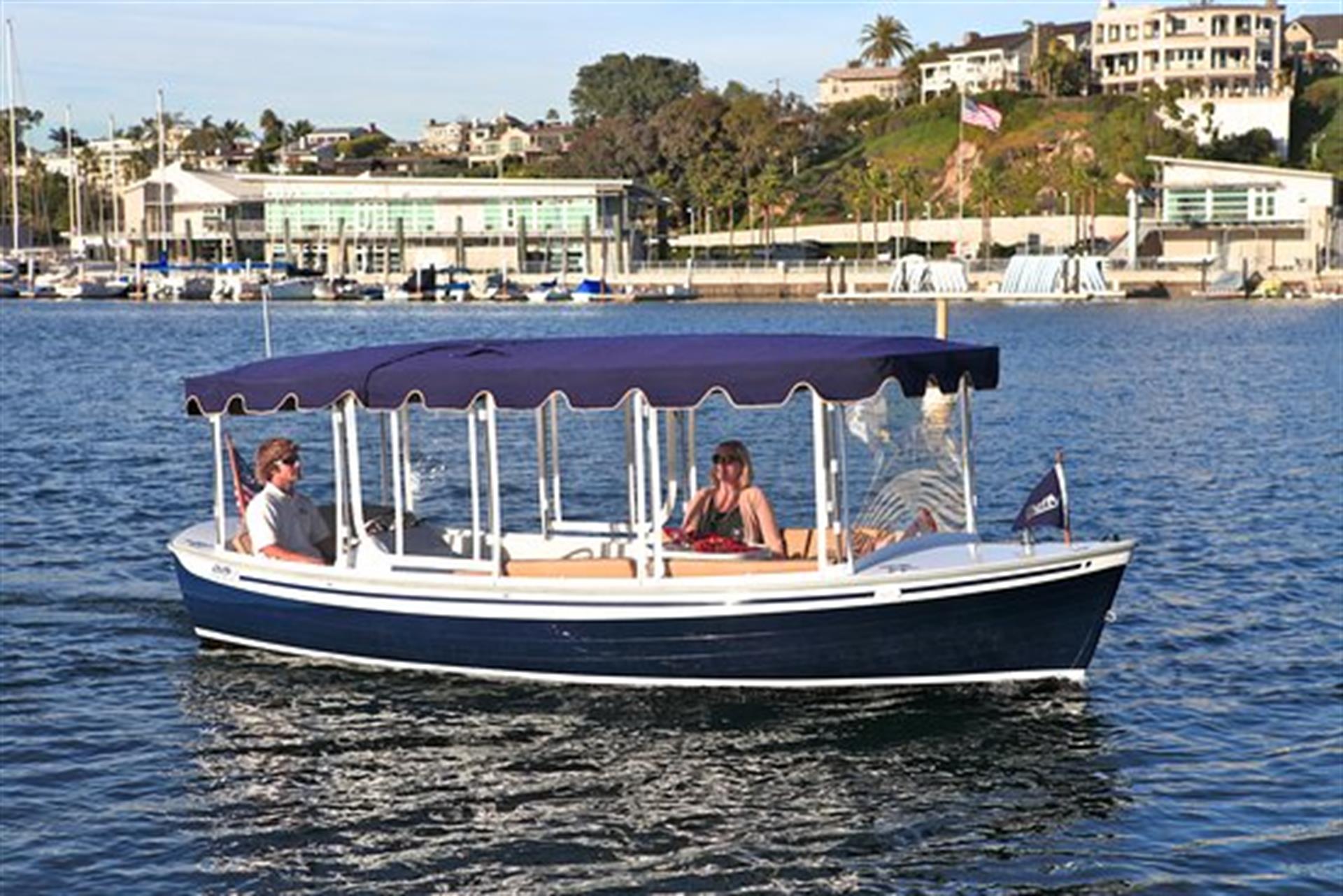
Duffy Boat: The Ultimate Guide to Electric Boating Experiences

Gunwale Reinforcement: A Critical Step in Boat Maintenance

Scarab Boats: Ultimate Performance and Style on the Water

You See a White Buoy with an Orange Square and Black Lettering: Decoding Navigational Markers

Navier Boat: Revolutionizing the Electric Maritime Industry
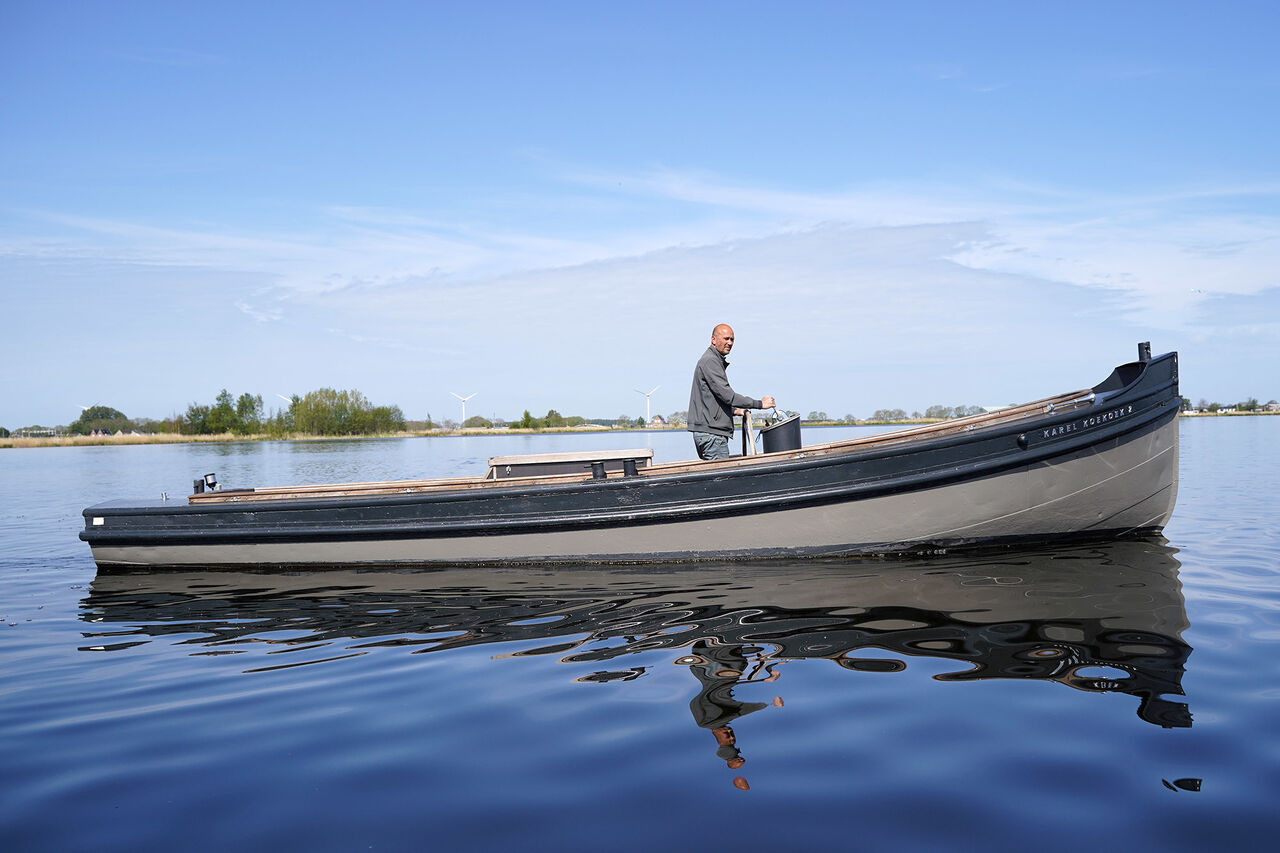
Sloep Boats: A Comprehensive Guide for Enthusiasts
- Pontoon Boats
- Personal Watercraft
- nauticalknowhow
- Nautical Knots
- Tools and Calculators
The Nautical Flag Alphabet for Beginners
The nautical flag alphabet, also known as international maritime signal flags, is a system of 26 flags. In addition there are:
- 10 numeral pennants
- 3 substitute pennants
- 1 answering pennant
These are used as communications tools on boats and they date back a considerable length of time. The nautical alphabet flags rely on a signal flag or code flag combination that can have meaning that transcends language.
Nautical Flag Alphabet Meanings
| A or Alfa Flag | Diver down, keep clear | |
| B or Bravo Flag | Carrying dangerous goods or cargo | |
| C or Charlie Flag | Affirmative/Yes | |
| D or Delta Flag | Keep clear, maneuvering with difficulty | |
| E or Echo Flag | Altering course to starboard | |
| F or Foxtrot Flag | Disabled, please communicate with me | |
| G or Golf Flag | I require a pilot or, on a fishing vessel, I’m hauling nets | |
| H or Hotel Flag | Pilot on board | |
| I or India Flag | Altering course to port | |
| J or Juliett Flag | Fire on board or leaking dangerous cargo, stay clear | |
| K or Kilo Flag | I wish to communicate with you | |
| L or Lima Flag | Stop your vessel instantly, I need to communicate with you right away | |
| M or Mike Flag | My vessel has stopped and is making no way | |
| N or November Flag | No/Negative | |
| O or Oscar Flag | ||
| P or Papa Flag | In port to mean vessel is about to set sail/all hands need to come aboard. At sea indicates nets have come upon an obstruction | |
| Q or Quebec Flag | I request free pratique which means everyone on board is healthy and the boat wishes permission to dock. | |
| R or Romeo Flag | The Romeo flag has no single specific ICS meaning and can mean several things when combined with others or as a Navy signal. | |
| S or Sierra Flag | Operating with astern propulsion | |
| T or Tango Flag | Keep clear. For it means keep clear, engaged in trawling | |
| U or Uniform Flag | You are heading towards danger | |
| V or Victor Flag | Assistance required | |
| W or Whiskey Flag: | I require medical assistance | |
| X or X-Ray Flag | Stop what you’re planning on doing and wait for further signals | |
| Y or Yankee Flag | Dragging | |
| Z or Zulu Flag | I require a tug |
There are also numerical pennant flags and substitute flags which you can see on this table here.
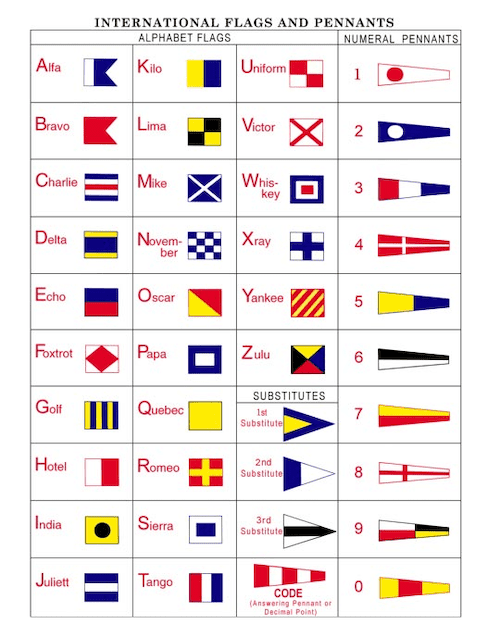
Why are Nautical Flags Important and What Do They Do?
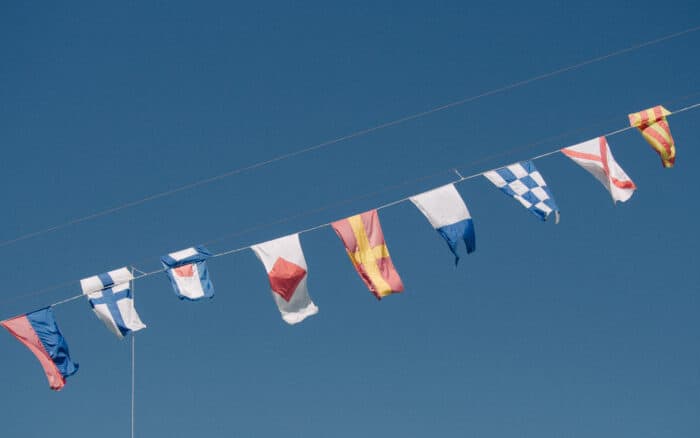
Even though in the modern world boats are equipped with VHF radios and other advanced forms of communications, nautical signal flags are still employed because of what they can represent in an international way. That means that nautical flags are able to convey meaning between boats at sea quickly and relatively easily, even in the face of technology breakdowns or language barriers.
For the 26 flags of the nautical flag alphabet, each flag has two meanings. One is a simple letter meaning and each flag is ascribed one letter, A through Z, which can be used to spell out words. However, according to the International Code of Signals, each flag has a specific meaning that transcends language to allow quick communication between vessels no matter their country of origin.
Nautical Signal Flags and Their Colors
There are only five colors you will see in nautical signal flags.
These colors stand out against the background of the sea or sky on individual flags whether they be letter flags or number flags. They have proven to be some of the easiest for people to see on boats either with the naked eye or with binoculars.
If you see flags of other colors they are not official signal flags.
Multiple Nautical Flag Alphabet Signs
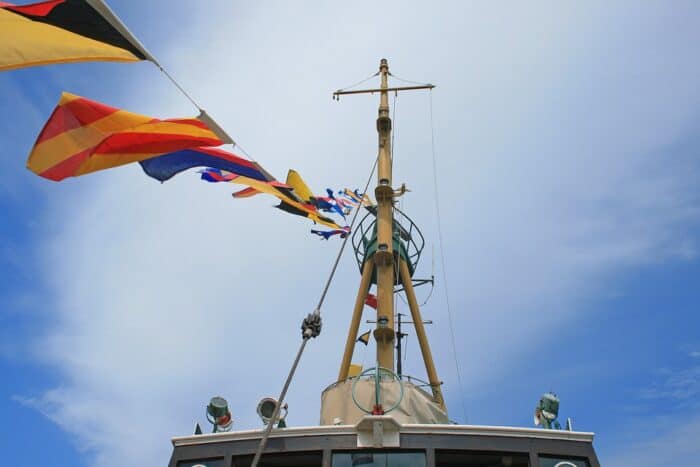
We’ve seen what single flags can mean but there are times when a vessel may use multiple flags, not just to spell out words with the alphabet, but to convey specific meanings.
- One Flag: These signals are urgent or extremely common signals which is why they are conveyed with a single flag. The message can be relayed very quickly.
- Two Flags: These signals are reserved for conveying information about maneuvering or distress.
- Three Flags Or More: These flag signals are used for things like compass directions, bearings, code and decode signals, geographical signals and more.
- Up to seven flags can be used to convey meanings.
Multiple Flag Meanings
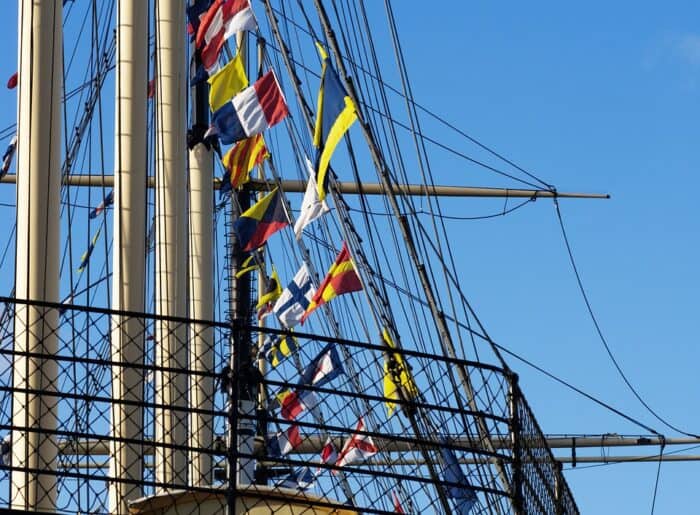
The following is a brief list of the some meanings for combining two nautical flags (and sometimes more) that you may see at sea. Some are more common than others.
- A+C: I am abandoning my vessel
- A+E: I have to abandon ship
- A+F: I am not abandoning ship
- A+G: You need to abandon ship
- A+H: You should not abandon ship
- A+L: I have a doctor on board
- A+M: Do you have a doctor on board?
- A+N: I need a doctor
- A+N+1: Need a doctor, have been burned
- B+P: Aircraft is coming to assist
- B+R: I require a helicopter immediately
- C+B: I require immediate assistance
- C+B+6: I require assistance immediately, I am on fire
- C+J: Do you need help?
- C+K: I no longer need help
- C+P: I am coming to help
- C+V: I am unable to help
- C+W: Boat or raft is on board
- D+D: Boats cannot come alongside
- D+V: I am drifting
- D+X: I am sinking
- E+D: I understand your distress signals
- E+F: SOS or Mayday has been canceled
- E+L: Repeat distress position
- E+L+1: What is the position of the vessel that is in distress?
- E+P: I can no longer see you
- E+X: Unsure of my position
- E+Y: I am sure of my position
- F+A: Please tell me my position
- F+E: Heading to the accident location at full speed
- F+N: I’ve lost contact with vessel
- F+O: I will stay close to your vessel
- G+A: I cannot continue to search
- G+B” You should stop searching and return home or continue onward
- G+M: I cannot save my vessel
- G+N: You should take off persons
- G+N+2: I will take off persons
- G+O: I cannot take off persons
- G+Q: I cannot proceed to rescue due to weather. You should do whatever you can
- G+W: Man overboard, please take action to rescue him
- G+Z: Everyone has been saved
- G+Z+1: Everyone has been lost
- H+M: Survivors in dire need of medical assistance
- H+W: I have collided with another vessel
- I+B+1: Vessel is seriously damaged
- I+M: Requesting escort
- I+N: I require a diver
- I+R: I am doing work underwater, proceed slowly and keep clear
- I+T: I am on fire
- J+B: Danger of explosion
- J+G: I am aground, in danger
- J+H: I am aground, not in danger
- J+I: Are you aground?
- J+L: You are risking running aground
- J+W: I have a leak
- K+F: Tug required
- K+K: Towing impossible under current conditions
- K+N: I can’t tow you
- K+P: Please tow me to the nearest port/anchorage
- L+I: I am increasing my speed
- L+J: I am reducing my speed
- L+R: Bar is not dangerous
- L+S: Bar is dangerous
- L+X: Canal is clear
- L+Y: Canal is not clear
- M+B: Keep to the center of the channel
- M+C: Proceed with caution, there is an uncharted obstruction
- M+O: I have hit a submerged obstruction
- M+S: Vessel has dangerous radiation
- M+Y: It is too dangerous to stop
- N+A: Navigation is closed
- N+C: I require immediate assistance
- N+D: Tsunami approaching, take caution
- N+E: Proceed with extreme caution
- N+F: You are heading towards danger
- N+G: You are in a dangerous spot
- N+O: Negative
- N+T: What is your draft?
- O+H: Keep watch on your radar
- O+I: I have no radar
- O+K: Correct
- O+S: Mines in area
- P+D: I cannot see your navigation lights
- P+H: Steer as indicated
- P+H+1: Steer towards me
- P+K: I cannot steer without help
- P+M: Follow in my wake
- P+O: Pass ahead of me
- P+P: Keep clear of me
- P+S: Don’t come any closer
- Q+C: Wait until high water
- Q+C+1: Wait until low water
- Q+D: I’m going ahead
- Q+F: I cannot go ahead
- Q+I: I am going astern
- Q+K: I cannot go astern
- Q+O: You should not come alongside
- Q+Q: I require health clearance
- Q+T: You shouldn’t anchor
- Q+U: Anchoring is not allowed here
- Q+X: Requesting permission to anchor
- R+A: My anchor is foul
- R+B: I’m dragging my anchor
- R+L: Stop engines immediately
- R+M: My engines have stopped
- R+P: Landing here is dangerous
- R+S: No one is allowed on board
- R+T: Stop what you’re doing and watch my signals
- R+U: Keep clear, I am having trouble maneuvering
- S+C: I am underway
- S+D: I am not ready to get underway
- S+G: My present speed is (number) knots
- S+O: You should stop or heave to
- S+T: What is your cargo
- S+Z: Total people on board is (number)
- T+P: Fishing gear has fouled my prop
- T+V: Fishing is prohibited in this area
- T+Z: Can you offer assistance?
- U+H: Can you lead me into port?
- U+L: All vessels need to proceed to sea, there is danger in port
- U+M: Harbor is closed
- U+O: You cannot enter harbor
- U+P: Urgent permission needed to enter harbor, I have an emergency
- U+W: Pleasant voyage
- V+L: Tropical storm is approaching, take precautions
- W+W: What are weather conditions in your area?
- X+P: I am stopped by thick fog
- X+R: Weather is good
- X+R+1: Weather is bad
- Y+K: I am unable to answer you
- Y+N: Cancel last message
- Y+Y: I wish to communication by VHF radio
- Y+Z: I am going to spell a word with my next signals
- Z+E: Come within visual signal range
- Z+L: Your signal has been received but not understood
- Z+W: I require the port medical officer
Can I Write Using a Nautical Flag Alphabet Font?
If you’re interested in making quick documents as a lesson plan or as a guide to have on your vessel in case of an emergency there are a number of websites that have free Nautical Flag fonts you can download. You can find one here and another one here .
The Bottom Line
Though modern electronic communications is obviously the most fast and efficient way to talk to other vessels, emergency services or those on land, it’s not always an option or not always the best option. The International Code of Signals can convey meaning anytime and anywhere no matter what language boaters speak, especially in emergencies. It’s essential for any serious boater to become familiar with the flags and their meanings not just so that you can express yourself to others but also so you can understand others who may have important information or require assistance from you as well.
My grandfather first took me fishing when I was too young to actually hold up a rod on my own. As an avid camper, hiker, and nature enthusiast I'm always looking for a new adventure.
Categories : Boats
Leave a Reply Cancel reply
Your email address will not be published. Required fields are marked *
Save my name, email, and website in this browser for the next time I comment.
More in Boats

What Is A Gunwale?

131 of the Best Hawaiian Boat Names

167 Patriotic Boat Names

The 138 Best Boat Names for Dog Lovers

The People’s Poncho Review and Ratings

Oru Lake Kayak Review

About Boatsafe
Established in 1998, BoatSafe is your independent guide into the world of boating, fishing, and watersports. We provide expert insights and detailed guides to help you find products tailored to your needs and budget.
Contact Boatsafe
- Address: 4021 West Walnut Street. Rogers, AR 72756
- Phone: (479)339-4795
- Email: [email protected]
Site Navigation
- How We Test
- Corrections Policy
- Privacy Policy
- Terms & Conditions
- Editorial Policy
- Affiliate Disclosure
Our Reviews

All content is © Copyright 2024. All rights reserved.
RACE SIGNALS

Understanding the Nautical Flags, Sailing Flags, & the Nautical Alphabet

Table of Contents
Last Updated on June 9, 2023 by Boatsetter Team
Just as the marine electronics and lights on a boat help you communicate with your fellow cruisers, nautical flags and sailing flags are a language of sorts, too. They help alert others to maneuvers you’re making, for example, or an emergency. In certain combinations, they warn of bad weather. It all depends upon which flag—or flags—you see.
Here’s how to make sense of the nautical flag alphabet. This way, you understand the situation at hand when you’re next out on the water.
Explore Powerboat & Sailboat Rentals Near You
6 Tips for Identifying Nautical Flags
1. pay attention to the flag’s shape..
Most nautical flags are squares. Additionally, you’ll find some resembling triangles but with flat tips—a.k.a. pendants. These two shapes are the most common.
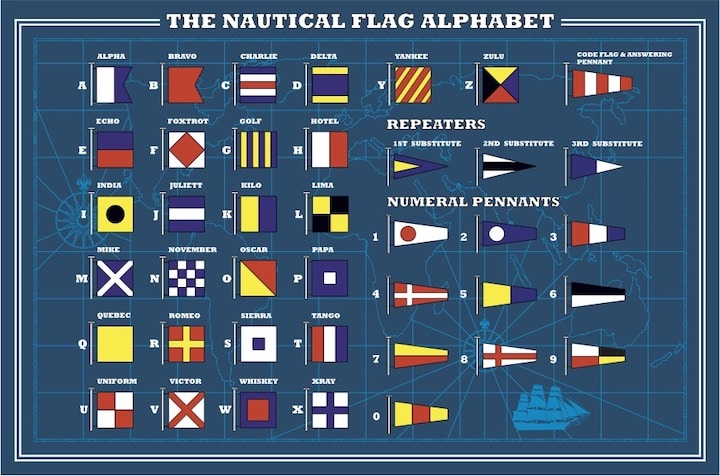
2. Learn the nautical flag alphabet.
Conveniently, for every letter of the alphabet, there’s an equivalent square nautical flag. Well, more accurately, each flag represents international code words like Alpha, Bravo, Charlie, etc., which correspond to alphabetical letters. The full list and their meanings:
- A – Alpha – diver down; keep clear
- B – Bravo – carrying dangerous cargo
- C – Charlie – affirmative (yes)
- D – Delta – keep clear, I am maneuvering with difficulty
- E – Echo – altering course to starboard
- F – Foxtrot – I am disabled, communicate with me
- G – Golf – I want a pilot
- H – Hotel – a pilot is onboard
- I – India – I am altering my course to port
- J – Juliet – vessel on fire, keep clear
- K – Kilo – I want to communicate with you
- L – Lima – stop your vessel instantly, I have something important to communicate
- M – Mike – my vessel is stopped and making no way through the water
- N – November – negative (no)
- O – Oscar – man overboard
- P – Papa – about to sail (when flown in port; at sea, fishing vessels use it to mean their nets are caught on an obstruction)
- Q – Quebec – I request free pratique (clearance to enter port due to no disease onboard)
- R – Romeo – reverse course
- S – Sierra – engines are going astern
- T – Tango – keep clear, I am engaged in trawling (if a fishing vessel; if a naval ship is flying this flag, it means do not pass ahead)
- U – Uniform – you are heading into danger
- V – Victor – I require assistance
- W – Whiskey – I require medical assistance
- X – X-ray – stop your intention
- Y – Yankee – I am dragging anchor
- Z – Zulu – I require a tug
3. Remember that the numbers on nautical flags have meanings, too.
When it comes to numbers, boaters use pendants. Ten different pendants represent the numbers zero through nine. A combination of flags denotes the numbers 10 and up.
4. Consider the color of the flag.
Nautical flags only use five colors:
Not coincidentally, each of these stands out against the sky, easily seen through binoculars or with the naked eye. You might see a solid-color flag or one with a combination of colors. For example, two red pendants means there’s a small-craft advisory.
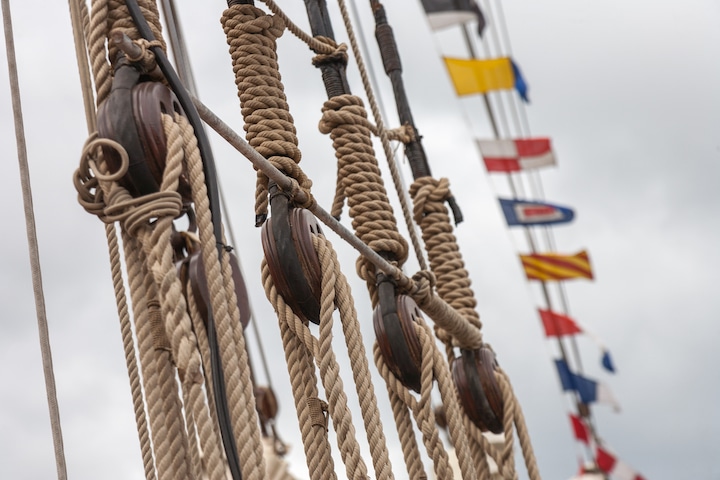
5. Tally the total.
Boats can fly up to seven flags in a row to convey certain messages.
- Solo flags are the previously mentioned international code words (Alpha for diver down, for instance).
- Two nautical flags flown together typically indicate distress or a maneuvering problem. A good example: Oscar and Whiskey flown together mean someone fell overboard and needs medical assistance.
- Three-flag signals can mean the points of the compass, among other things. Four-flag signals are ship names, while five are time and position. Six-flag signals indicate latitude and longitude, while seven mean longitude with more than 100 degrees.
6. Keep in mind that special languages exist.
Sometimes, the nautical flag alphabet is unique to certain situations. Regattas assign different meanings to a few flags, so that racers understand what’s happening. NATO and even the U.S. Navy do, too, with only their personnel knowing the meanings.
Ready to hit the water? Browse local boat rentals near you.

A journalist with more than 30 years’ experience, Diane M. Byrne is the owner of MegayachtNews.com, a daily website educating American superyacht owners, buyers, and their circles of influence about the leading builders, designers, cruising destinations, and more. She founded the website in 2007 as the first, and still the only, American-focused online media outlet exclusively covering this market. It features all-original content, for real stories of real interest.
Diane is additionally one of the most-sought-after journalists for expert editorial coverage and commentary about not only superyachts, but also general boating and yachting. Her byline appears in Boatsetter.com, DiscoverBoating.com, and the magazines Luxury Guide, Ocean, Yachting, and Yachts International.
Additionally, Diane is the Chair of the U.S. Superyacht Association, having been on the Board of Directors since 2015. Outside of yachting, she’s a trustee of Sempre Avanti, a non-profit resource supporting Italian and Italian-American individuals, businesses, and organizations in the United States and Italy.
Browse by experience

Explore articles

Boat Buying Guide: Buying a New or Used Boat?

25 Best Songs for the Ultimate Boat Party Playlist
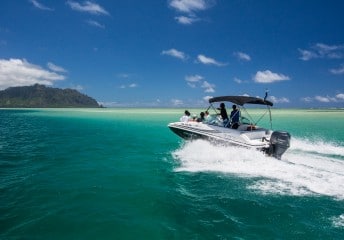

The Future of Recreational Boating: 5 Ways You Can Be Ahead of the Industry

3 Chefs Kiss Recipes for Your Next Boat Trip

Sailboat Racing Flags and Signals
Are you ready to hit the open water and experience the exhilarating world of sailboat racing? Before you set sail, it’s crucial to understand the meaning behind the various flags and signals used during races . In this article, we’ll dive into the International Code of Signals, explore preparatory, course, protest, abandonment, penalty, safety, and emergency signals.
Get ready to navigate the racing scene with confidence and sail towards victory!
Key Takeaways:
- The International Code of Signals consists of 26 flags and 10 numeral pennants , which are used for safety and communication on the water.
- Preparatory flags and signals such as the ‘P’ flag, ‘I’ flag, ‘S’ flag, and ‘X’ flag are crucial for sailors to understand and respond to, as they indicate important instructions and changes in the race .
- Course and mark signals provide information about the direction to sail and the marks themselves, helping sailors navigate the racecourse effectively and make informed decisions.
- Protest flags and signals, including the red flag with a white cross, blue flag, yellow flag, and red flag, are important for ensuring fair competition and resolving disputes between boats.
Table of Contents
The International Code of Signals
You should learn the International Code of Signals, as it consists of 26 flags and 10 numeral pennants that can convey important messages while sailing. These signals are essential for maintaining safety and communication on the water. By familiarizing yourself with this code, you can ensure that you’re prepared for any situation that may arise while sailing.
The International Code of Signals is a universal system used by sailors around the world . Its simplicity and effectiveness make it a valuable tool for communication at sea. Each flag and pennant represents a specific message or instruction , allowing sailors to convey important information without relying on verbal communication.
Learning the International Code of Signals is particularly important for those who desire freedom on the water. By understanding and using these signals, you can communicate with other boats, request assistance, or inform others of potential dangers. This knowledge empowers you to navigate the open seas confidently and independently.
In addition to enhancing your safety, knowing the International Code of Signals also allows you to fully immerse yourself in the sailing community. It’s a language shared by sailors worldwide, connecting you to a global network of adventurers who share your love for the sea.
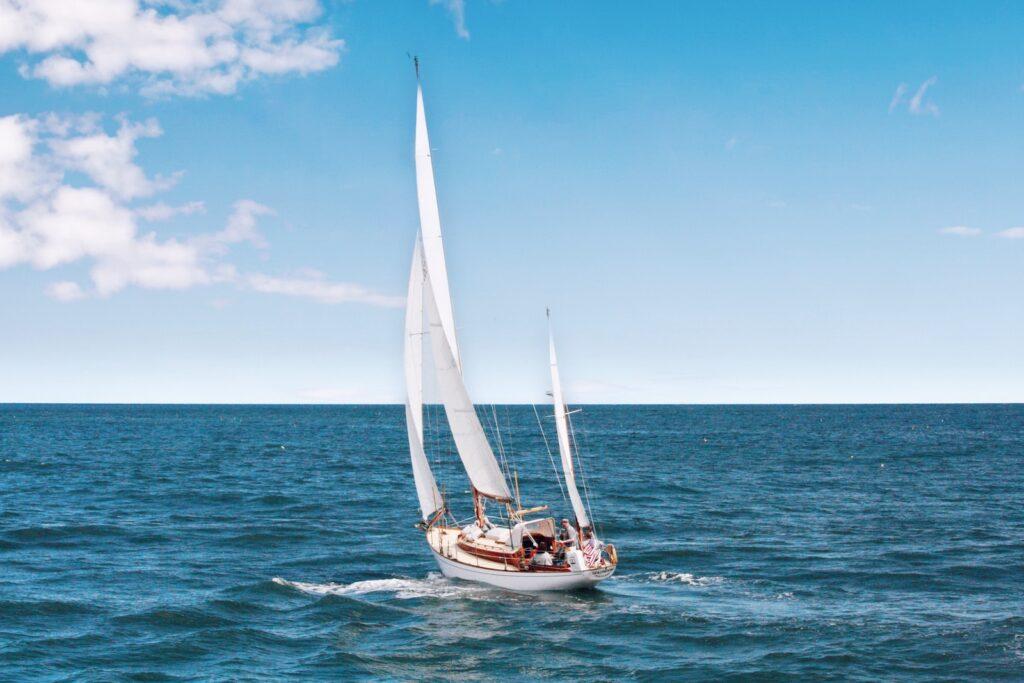
Preparatory Flags and Signals
Make sure to brush up on the meaning of the preparatory flags and signals before your next sail, as they can indicate important information about the race or event. These flags and signals are essential for every sailor who desires the freedom to compete in sailboat racing.
When you see the preparatory flag ‘P,’ it signals that the race is about to start, and you should be ready to go . Another important signal is the ‘I’ flag, which indicates a change in the starting line . Pay attention to this flag, as it could affect your strategy and give you a competitive advantage.
During the race, you may encounter the ‘S’ flag, which means you must take a penalty for a rule infringement . Don’t ignore this flag, as it could cost you valuable time and position. Additionally, the ‘X’ flag indicates that the race has been abandoned or postponed . If you see this flag, be prepared to follow the instructions given by the race committee.
Understanding and responding to these preparatory flags and signals is crucial for any sailor who values their freedom to compete in sailboat racing. So, take the time to familiarize yourself with them and be ready to navigate the racecourse with confidence and skill.
Course and Mark Signals
When approaching a mark, be sure to keep an eye out for the appropriate course and mark signals to navigate the racecourse effectively. These signals are crucial for your success as a sailor. Freedom is at the core of sailboat racing, and understanding these signals will give you the freedom to make informed decisions on the water.
As you approach a mark, look for the course signal displayed by the race committee . This signal indicates the direction you need to sail after rounding the mark. It could be a simple arrow pointing left or right, or it may consist of multiple arrows indicating a more complex course. Pay attention to this signal to ensure you take the correct path and stay on course.
In addition to the course signal, keep an eye out for mark signals . These signals provide important information about the mark itself. They can indicate a change in the mark’s position, a change in the rounding direction, or even a change in the mark itself . Understanding these signals will help you anticipate any changes in the racecourse and adjust your strategy accordingly.
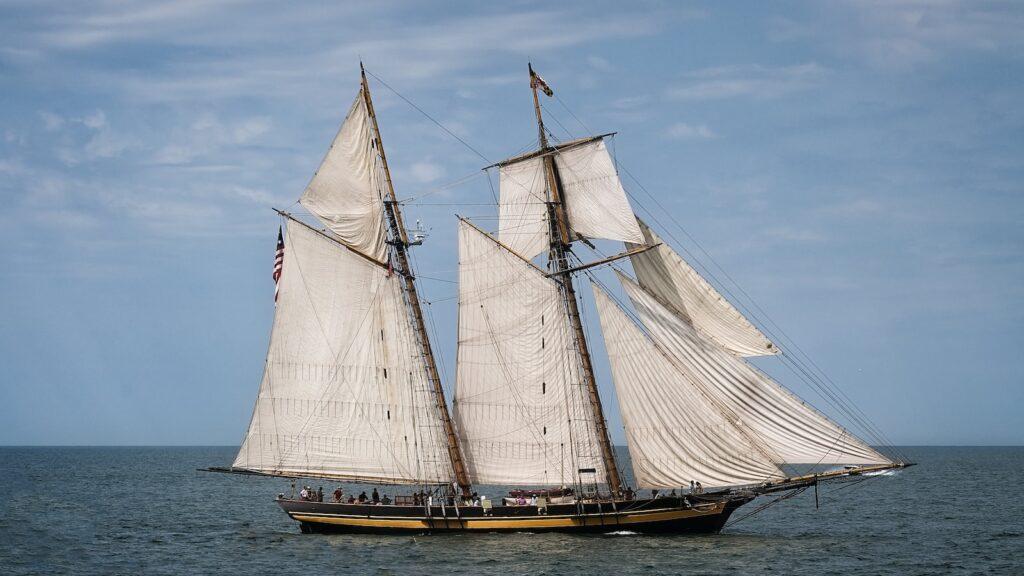
Protest Flags and Signals
When you see a protest flag in sailboat racing, it’s important to understand its meaning. The most common protest flag is a red flag with a white cross, indicating that a boat is protesting another boat for a rule violation.
If you find yourself in a protest situation, it’s crucial to know how to resolve it properly to ensure fair competition.
Meaning of Protest Flags
You should familiarize yourself with the meaning of protest flags before participating in sailboat racing. Understanding these flags is essential to ensure fair competition and maintain the freedom that racing represents.
Here are three important protest flags and their meanings:
- Blue Flag : This flag indicates that a boat intends to protest another boat for breaking a rule. It’s important to keep a close eye on this flag, as it signifies a potential dispute between competitors.
- Yellow Flag : When this flag is displayed, it means that a protest hearing is being held. This flag warns all participants to be cautious and respectful during the hearing process.
- Red Flag : The red flag is raised when a protest has been withdrawn. It signifies that the dispute has been resolved or abandoned.
Common Protest Signal
Don’t underestimate the significance of familiarizing yourself with the common protest signal during sailboat racing. It’s crucial to understand this signal as it can greatly impact your race and the freedom you desire on the open water.
When you see a boat raising a protest flag, typically a red flag, it means that they believe another boat has violated a racing rule. This signal signifies their intention to file a protest against the other boat’s actions.
As a sailor, knowing this signal allows you to be proactive in avoiding potential conflicts and ensuring fair competition. By being aware of the common protest signal, you can navigate the racecourse with confidence, knowing that you’re respecting the rules and upholding the freedom that sailboat racing represents.
Resolving Protest Situations
To effectively resolve protest situations during sailboat racing, it’s important that you remain calm and cooperate with the race officials. Remember, your freedom to enjoy the race depends on your ability to handle these situations with grace and respect.
Here are three key points to keep in mind:
- Communicate clearly: When presenting your protest, make sure your message is concise and easily understood. Use simple language and avoid any unnecessary aggression or hostility.
- Follow procedures: Familiarize yourself with the rules and regulations of the race. Understand the proper steps to take when filing a protest and be prepared to provide any evidence or witnesses that support your case.
- Be open to compromise: Sometimes, finding a middle ground is the best way to resolve a protest situation. Listen to the other party’s perspective and be willing to negotiate a solution that’s fair for everyone involved.
Abandonment Flags and Signals
Grab the binoculars and look for any abandonment flags or signals on nearby boats. As a sailor who desires freedom, you understand the importance of being aware of potential dangers on the water. Abandonment flags and signals are crucial in ensuring the safety of all sailors. These flags and signals indicate that a boat or its crew may require assistance or are in need of immediate rescue. By spotting these flags or signals, you can take action and provide the necessary help, ensuring that everyone can continue enjoying the freedom of sailing.
To help you better understand the various abandonment flags and signals, here is a table highlighting some of the most commonly used ones:
| Flag/Signal | Meaning | Emotional Response |
|---|---|---|
| Red flag | Boat is abandoned or crew is in distress | Concern, empathy |
| Orange smoke signal | Requesting immediate assistance | Urgency, alarm |
| Horn blasts | Distress signal | Attention, urgency |
Penalty Flags and Signals
Keep an eye out for any penalty flags or signals, as they can indicate rule violations and affect the outcome of the race. In sailboat racing, it’s crucial to understand the meaning behind these flags and signals to ensure fair competition and maintain the spirit of freedom on the water. Here are three key points to consider:
- Penalty flags: These flags are raised by race officials to indicate a rule violation by a boat. The flags come in different colors, such as yellow or blue, and are typically displayed alongside a number, representing the specific rule broken. Be vigilant in spotting these flags, as they can result in time penalties or disqualification.
- Signals from other boats: Pay attention to the actions of other boats around you. If a competitor raises a flag or makes a specific hand signal, it could be a warning that you have violated a rule. Keep an open mind and be ready to adjust your tactics to avoid penalties.
- Communication with race officials: If you have any doubts or concerns about a potential rule violation, don’t hesitate to contact the race committee. They’re there to ensure fairness and resolve any disputes that arise during the race. Maintain a respectful and open line of communication to uphold the principles of freedom and fair play.
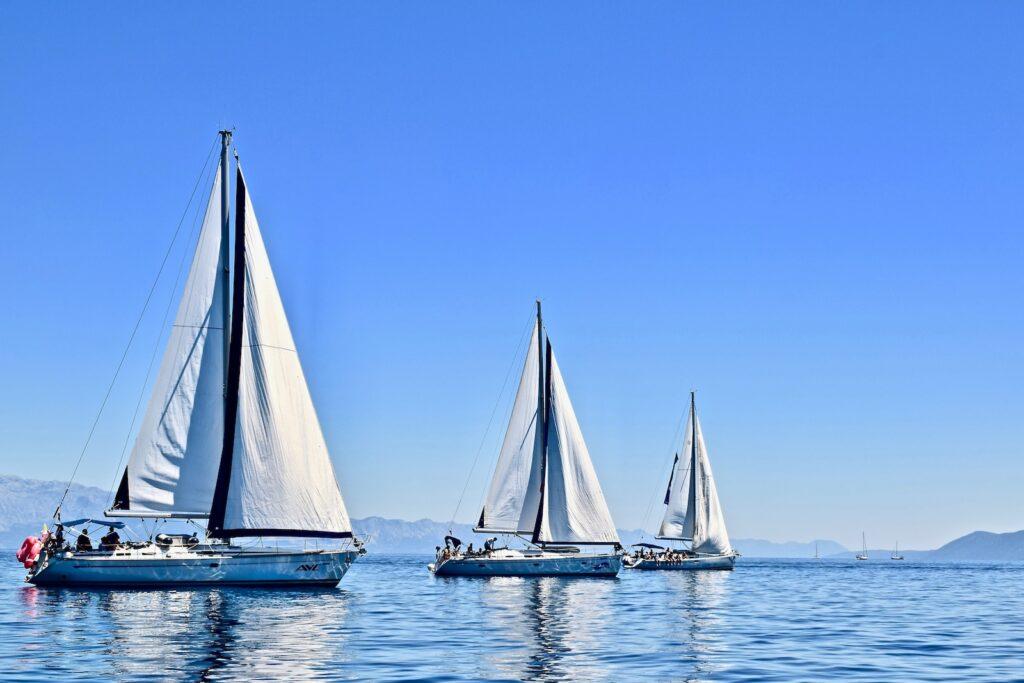
Safety and Emergency Signals
If you encounter any safety or emergency signals during the race, please follow the instructions provided and ensure the well-being of yourself and others. Your safety is of utmost importance, and it is crucial to understand the meaning behind these signals. To help you navigate the race course, here is a table outlining some common safety and emergency signals you may encounter:
| Signal | Meaning | Action Required |
|---|---|---|
| Red Flare | Emergency situation | Stop racing and await further instructions |
| Blue and White Checkered Flag | Abandon race | Return to the starting line |
| Orange Flag | Man overboard | Proceed with caution and assist if possible |
So, now you know the various sailboat racing flags and signals used in competitions. The International Code of Signals provides a standardized system for communication on the water.
From preparatory flags to protest flags, each signal plays a vital role in ensuring fair and safe races. Understanding these signals is crucial for all sailors and race officials.
By following the correct flags and signals, participants can navigate the racecourse effectively and respond appropriately to any emergencies or penalties that may arise.
Related posts:
Leave a Reply Cancel reply
Your email address will not be published. Required fields are marked *
Save my name, email, and website in this browser for the next time I comment.
Signal Flags - Sailing Communication Theory
We use technical and analytical cookies to ensure that we give you the best experience on our website.
Signal Flags
Flags to represent individual letters of the alphabet to aid in signalling to or from sailing vessels
International maritime signal flags is an Internation Code of Signals (ICS) system that uses flags to represent individual letters of the alphabet to aid in signalling to or from sailing vessels.
Below is a list of letters and their representing flag and meaning.
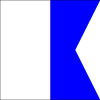
I have a diver down; keep well clear at slow speed. With three numerals, azimuth or bearing.
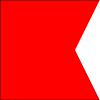
I am taking in, or discharging, or carrying dangerous goods. (Originally used by the Royal Navy specifically for military explosives.)
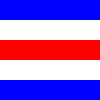
Affirmative. With three numerals, course in degrees magnetic.
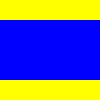
Keep clear of me; I am maneuvering with difficulty. With two, four, or six numerals, date.
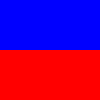
I am altering my course to starboard.

I am disabled; communicate with me.
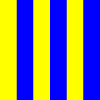
I require a pilot. When made by fishing vessels operating in close proximity on the fishing grounds it means: 'I am hauling nets'. With four or five numerals, longitude. (The last two numerals denote minutes and the rest degrees.)
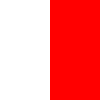
I have a pilot on board.
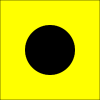
I am altering my course to port.
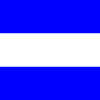
I am on fire and have dangerous cargo on board: keep well clear of me, or I am leaking dangerous cargo.
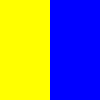
I wish to communicate with you. With one numeral, I wish to communicate with you by; 1) Morse signalling by hand-flags or arms; 2) Loud hailer (megaphone); 3) Morse signalling lamp; 4) Sound signals.
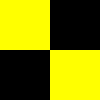
In harbor: The ship is under Quarantine. At sea: You should stop your vessel instantly. With four numerals, latitude. (The first two denote degrees and the rest minutes.)
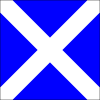
My vessel is stopped and making no way through the water.
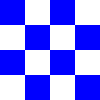
Man overboard. (often attached to the man overboard pole on boats). With a sinister hoist, the semaphore flag.

The Blue Peter. In harbor: All persons should report on board as the vessel is about to proceed to sea. At sea: It may be used by fishing vessels to mean: 'My nets have come fast upon an obstruction'.

My vessel is 'healthy' and I request free pratique.
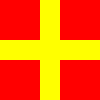
The way is off my ship. With one or more numerals, distance in nautical miles.

I am operating astern propulsion. With one or more numerals, speed in knots.
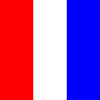
Keep clear of me; I am engaged in pair trawling. With four numerals, local time. (The first two denote hours and the rest minutes.)
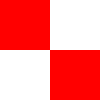
You are running into danger.
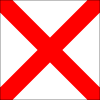
I require assistance. With one or more numerals, speed in kilometres per hour.

I require medical assistance.
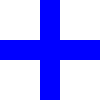
Stop carrying out your intentions and watch for my signals.
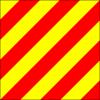
I am dragging my anchor.
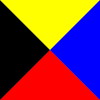
I require a tug. When made by fishing vessels operating in close proximity on the fishing grounds it means: 'I am shooting nets'. With one or more numerals, time (UTC). (The first two denote hours and the rest minutes.)

Nautical flags: Meanings and Alphabet
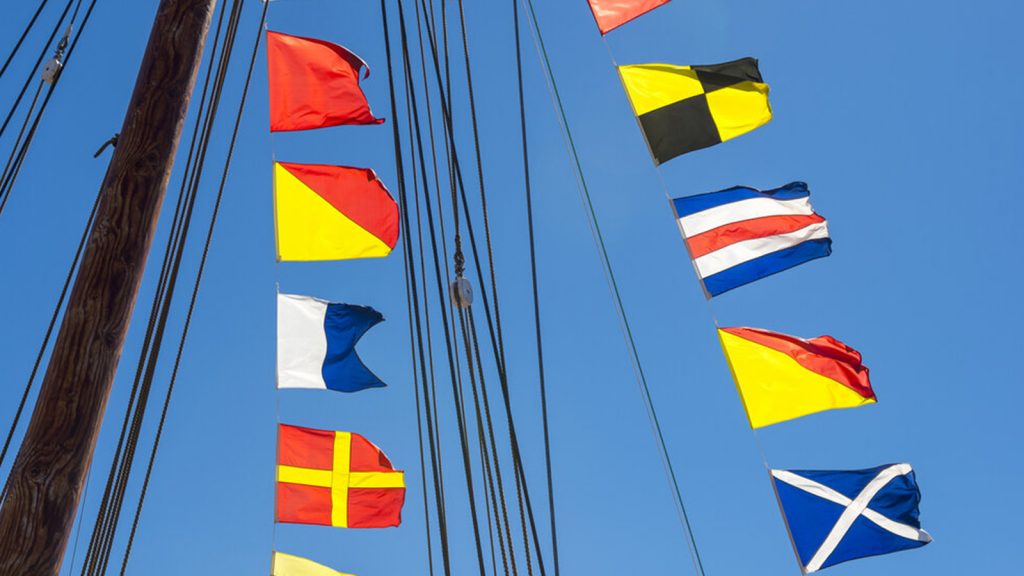
Nautical flags serve the purpose of communication in situations concerning navigation safety and individuals. They form an international code system enabling boats to signal to shore or for two boats to communicate with each other.
Individual flags have specific and standard meanings. These ones can be used in combination with another flag or alone. Using different nautical colored flags have a different meaning.
What are Nautical Flags?
Nautical flags, also known as maritime signal flags, are a set of flags and pennants used to communicate messages between ships and boats. Each flag represents a specific letter, number, or message, allowing vessels to convey information even when verbal communication is not possible.
The use of nautical flags dates back centuries and continues to be an essential aspect of seafaring traditions.
Nautical flags are compose of 26 square flags that represent the letters of the alphabet. There are also 10 numbered pendants, one answering pendant and three substitutes.
You will see nautical flags in a few colors because only a few flag colors are easily recognized:
Nautical Flags and Their Meanings
Importance of nautical flag meanings.
Understanding the meanings behind nautical flags is crucial for anyone involved in maritime activities.
Whether you’re a sailor, a boater, or simply fascinated by the sea, having knowledge of nautical flag communication enables you to interpret messages, navigate safely, and respond appropriately in different situations.
International Code of Signals
The International Code of Signals, also known as ICS, is a special set of rules that tells people who use nautical flags how to use them correctly. It helps sailors understand each other and communicate important messages by using these special flags in a specific way.
It was first established in the 19th century to facilitate communication and prevent misunderstandings among ships of different nationalities.
Over time, the code evolved and expanded to cover a wide range of messages and situations encountered at sea.
Within the International Code of Signals, each nautical flag represents a specific letter or number, as well as a set of predefined messages. These flags are combined to form words, phrases, and sentences, allowing vessels to spell out messages and communicate essential information.
The nautical flags in the International Code of Signals can be categorized into several groups, including alphabetic flags, numeric pennants, substitutes, repeaters, and special flags. Each category serves a specific purpose and carries distinct meanings when used in communication.
Individual Flag Meanings
Numeric pennants and their meanings.
Numeric pennants are a series of flags, each representing a number from zero to nine. These flags are used to communicate numerical information, such as coordinates, distances, or time. By combining different numeric pennants, vessels can convey precise numerical values, ensuring accurate communication between ships.
Letter flags and their meanings
Individual letters of the alphabet are represented by letter flags in the International Code of Signals. They are used to spell words and form sentences. Understanding the meanings assigned to each letter flag is critical for interpreting nautical flag messages and effectively communicating information.
Substitutes and repeaters in nautical flag communication
Substitute flags and repeater flags play important roles in nautical flag communication. Substitute flags are used to replace specific letter flags when they are not available or cannot be easily identified.
Repeater flags, on the other hand, are used to indicate that the preceding flag should be repeated. These flags ensure clarity and facilitate accurate transmission of messages.
Special flags and their purposes
The International Code of Signals includes several special flags that represent specific messages or commands. These flags convey information related to safety, medical assistance, maneuvering instructions, and more.
Understanding the meanings behind these special flags is crucial for maintaining safety and effective communication on the water.
Nautical Flags Meanings
It’s important to understand nautical flags and their meaning because they are valuable at sea in case of breakdowns in other communications systems (eg. radio) or in case of danger.
- One-flag signals are urgent or common signals.
- Two-flag signals are used for distress and maneuvering.
- Three-flag signals are for points of the compass, relative bearings, standard times, verbs, punctuation and also general code and decode signals.
- Four-flags are used mostly for geographical signals, names of ships, bearings, etc.
- Five-flag signals are used to relate time and position.
- Six-flag signals are used to indicate the main cardinal directions (N, S, E or W) in latitude and longitude signals.
- Seven-flags are used as signals for indicating longitude signals containing more than one hundred degrees.
Nautical flags are also used in nautical racing which signal to the competitors what they are supposed to do.
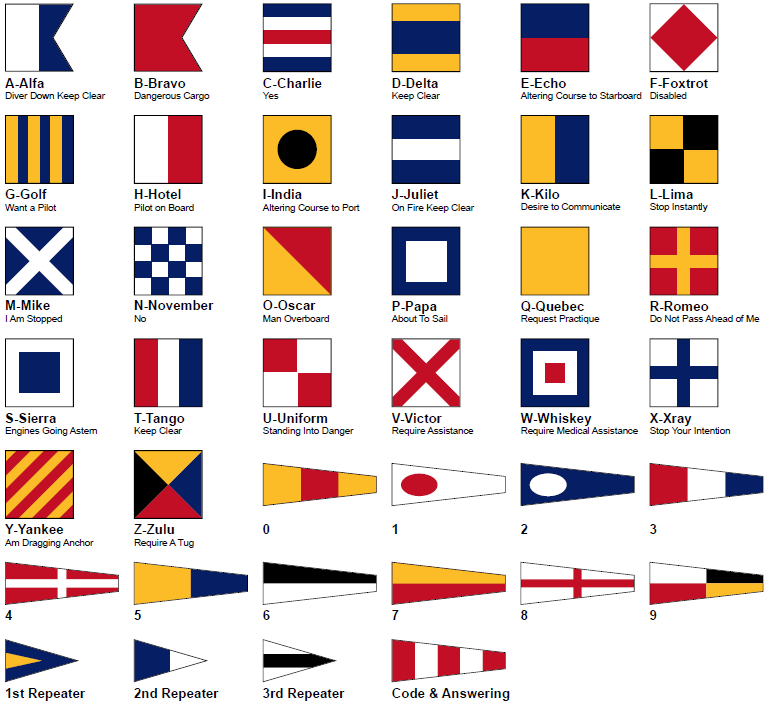
The Nautical Flag Alphabet
It is critical to understand that each flag representing a letter has a specific meaning.
International meanings for nautical flags:
- A: Alpha – diver down; I am undergoing a speed trial
- B: Bravo – carrying dangerous cargo
- C: Charlie – yes (affirmative)
- D: Delta – keep clear of me, I am manoevering with difficulty
- E: Echo – altering course to starboard
- F: Foxtrot – I am disabled, communicate with me
- G: Golf – I want a pilot
- H: Hotel – a pilot on board
- I: India – I am altering my course to port
- J: Juliet – vessel on fire keep clear
- K: Kilo – I want to communicate with you
- L: Lima – stop your vessel instantly, I have something important to communicate; Come Within Hail or Follow Me (Sailing Regatta)
- M: Mike – my vessel is stopped and making no way through the water; Mark Missing (Sailing Regatta)
- N: November – no (negative); Abandonment and Re-sail (Sailing Regatta)
- O: Oscar – Man overboard
- P: Papa – In port: All personnel return to ship; vessel is about to sail; At sea, fishing vessels might use this specific flag to convey the message “My nets have become entangled with an obstacle.”
- Q: Quebec – I request free pratique
- R: Romeo – reverse course
- S: Sierra – engines are going astern
- T: Tango – Keep clear; engaged in trawling. (International); Do not pass ahead of me. (Navy)
- U: Uniform – you are heading into danger
- V: Victor – require assistance
- W: Whiskey – require medical assistance
- X: X-ray – stop your intention
- Y: Yankee – am dragging anchor
- Z: Zulu – I require a tug

Solo or combined nautical flags have different meanings
Depending on the type of message, boats fly between 1 and 7 nautical flags. The combination of the O (Oscar) and W (Whiskey) flags, meanwhile, means “Man overboard. I require medical assistance”.
Signals with two nautical flags usually mean a certain problem of danger or maneuver. Three or more flags may include pendants and may indicate things such as compass points, time and position, geographic signals, geographic coordinates, and boat names.
Nautical Flags, sometimes the secret language of ships
While sailors around the world use nautical flags to communicate different scenarios, certain situations use secret language.
For example, the US Navy groups signals together in ways known only to its staff to communicate with its fellow ships.
NATO uses also the same nautical flags, with a few additional ones to warships, alone or in short sets to communicate various unclassified messages.
In yacht racing, the nautical flags have other meanings. These ones are solo or combined.
The P flag, for example, is employed as the “preparatory” flag to indicate an impending start, while the S flag indicates that a course has been shortened.
Nautical Flags to Buy
Interested in buying nautical flags to decorate your yacht? Whether you want to add a nautical flag pole, or you’re looking to replace an old nautical flag, we hope you find what you’re looking for!
Set of 50 Nautical Flags
We recommend this set of 50 (100% cotton) nautical flags. All flags are hand-made, so they can be quite smaller or bigger. Each flag is about 8 inches tall and 13 inches wide. All are printed on both sides. They give you a guarantee on color for life.
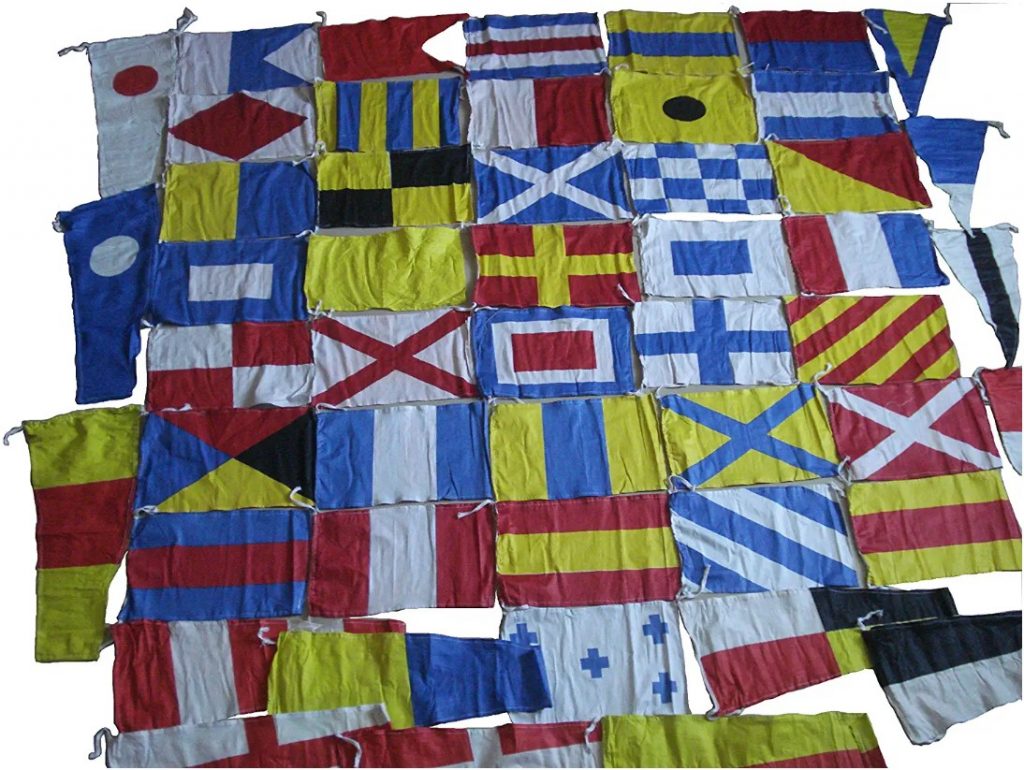
Maritime Signal Flags - 40 Different Decorative Flags - Over 40 Feet Long - Easy to Display
The flags are constructed of weather-resistant nylon cloth with double stitched seams. They are connected on a nylon chain with knots at both ends for convenient hanging.
These rectangular flags are 6″ x 9″, while pennant flags measure 6″ x 14″ or 6″ x 9″. The nylon cable is more than 40 feet long, with 7″ between flags and 36″ ties on either end.
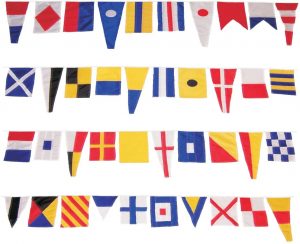
FLAGLINK International Marine Navy Signal Code Flag Set - String of 40 Flag - 40 Feet Long – Nautical Maritime Boat Ship Vessel Nautical Theme Decoration for Patry
Do you plan on throwing a big party on the boat and want to deck out the entire vessel in honor of the occasion? These nautical flags, which are less expensive than the previous ones, are an excellent choice for interior or outdoor decorations.
You may hang your ornamental flags in your front yard, garden, or patio, so that your family and friends can view the gorgeous holiday flag design from every aspect and vantage point. Because they are constructed of a water-resistant polyester fabric, they may be left outside for an extended period of time.
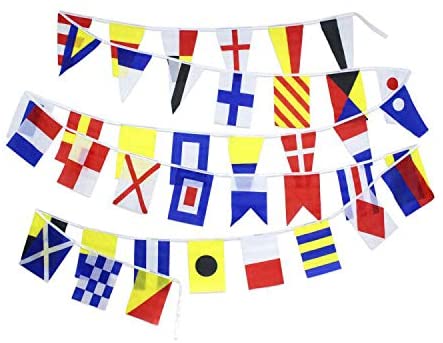
What nautical flags mean?
The purpose of nautical flags is to give ways and means of communication in circumstances involving the safety of navigation and people. Nautical flags are an international coding system used for a boat to indicate to land or for two vessels to signal to each other in situations involving the safety of navigation and people.
How many nautical flags are there?
There are 26 square nautical flags. Each of them symbolizes an international code term associated with the letters of the alphabet, such as Alpha, Bravo, Charlie, Delta, and so on.
What are nautical flags called?
Nautical flags are also known as international maritime signal flags, signal flags or boat flags.
How do you spell out messages using nautical flags?
Messages are spelled out using nautical flags by hoisting the flags in the correct sequence according to the International Code of Signals. Each flag represents a letter, and the combination of flags creates words, phrases, and sentences.
Are there any alternative systems to nautical flag communication?
While nautical flags are widely used for communication at sea, alternative systems such as radio communication, semaphore flags, and modern technologies like VHF radios and satellite communications also play a role in maritime communication.
Where can I learn more about nautical flag meanings?
To learn more about nautical flag meanings and communication, you can refer to resources such as official publications on the International Code of Signals, maritime museums, boating and sailing organizations, and online references that provide detailed information on nautical flags and their meanings.
Leave a Comment Cancel Reply
Your email address will not be published. Required fields are marked *
5 Tips for Understanding Nautical Flags & their Meanings
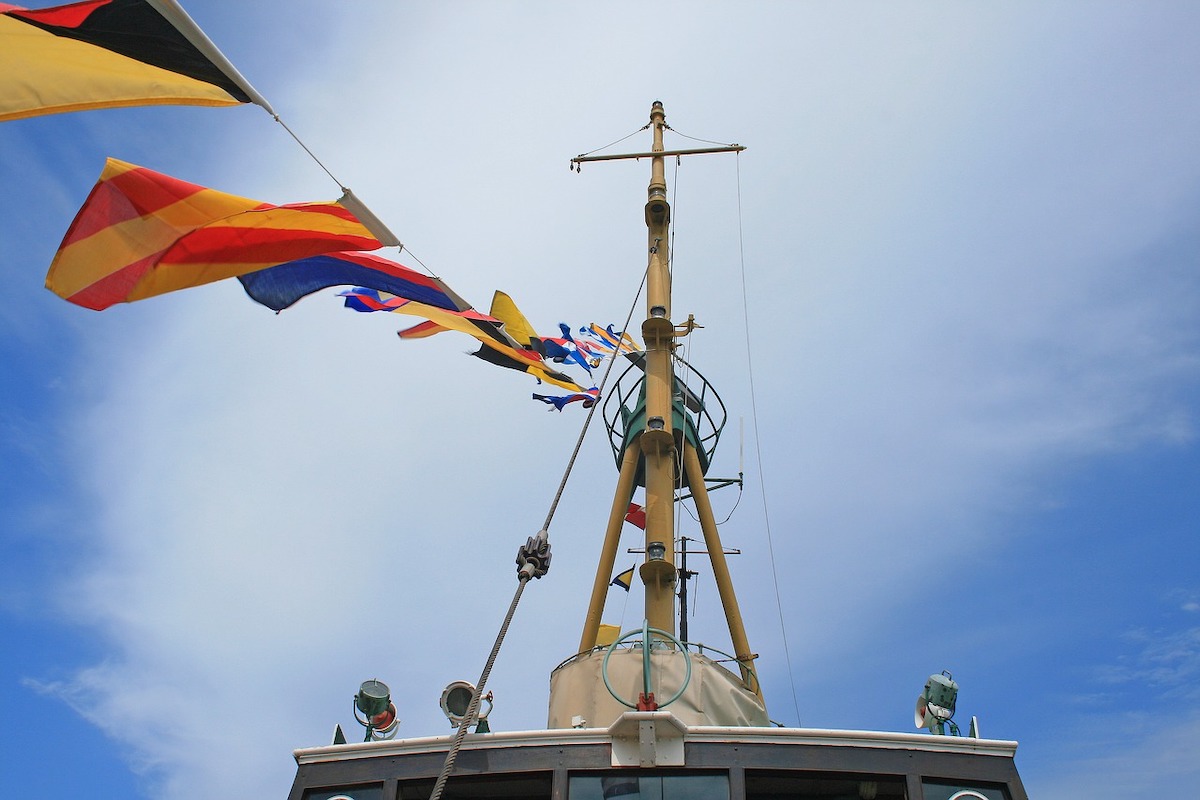
If you’re curious as to the deeper meaning behind these signals, here’s some nautical flags know-how.
1. Shapes and types are important.
Nautical flags mostly take the forms of squares, though you’ll also see pendants, which are triangular with a flat tip. You’ll additionally see what’s called substitutes (alternately called repeaters), which are triangles. Since this is a “flags 101” article, we’ll focus on the squares and pendants. They’re the ones you’re more likely to see in common boating situations.
2. Learn the letters and numbers.
There are 26 square nautical flags, each representing a different letter of the alphabet. More accurately, each represents the international code word connected to the letters of the alphabet, such as Alpha, Bravo, Charlie, Delta, and so on. In addition, there are 10 pendants for the numbers zero through nine. For the numbers 10 and larger, a boat would combine flags.
3. Colors are by choice.
The only colors you’ll find on nautical flags are black, blue, red, yellow, and white. These colors stand out quite well when seen with your own eyes on the horizon or through binoculars. Flags can be a solid color or a combination of colors, too.
4. Solo or combined, nautical flags convey meaning.
Depending on the intended message, boats fly one flag or up to seven flags in a row.
- For example, if you see the A (Alpha) flag , this means “diver down, keep clear.”
- If you see the W (Whiskey) flag , the boat has a medical emergency and needs help.
- The combination of the D (Delta) and V (Victor) flags , meanwhile, means “I’m maneuvering with difficulty and require assistance.”
- The J (Juliet) and L (Lima) flags mean “you’re running the risk of going aground.”
In fact, signals with two nautical flags typically mean some type of distress or maneuvering issue. Three or more flags can include pendants and denote things like points of the compass, geographical signals, names of ships, time and position, as well as latitude and longitude.
5. Flags are sometimes exclusive or secret language.
While boaters around the world use nautical flags to communicate common scenarios, particular situations call for their own language. Race committees combine flags to convey a race is four minutes from start, for example, or that a course has been shortened. The U.S. Navy groups together signals in ways known only to its personnel to communicate with its fellow ships.
Read Next: Basic Boating Etiquette
You Might Also Like:
- How to Navigate a Boat
- Boating Courses, Education & Training
- Safe Boating Guide
- Best Boating Apps: Navigation, Fishing, Weather & More
- The Ultimate Boat Buyer's Guide
Join Our Newsletter!
Get community news, buying bargains, and how-to guides at your fingertips.
Nautical Flags and Their Meanings
International Code Flags (also see Multiple Flags Signal Codes )
|
| ||
|
| ||
|
|
| |
|
| ||
|
| ||
|
| ||
|
| ||
|
| ||
|
|
| |
|
| ||
|
| ||
|
|
| |
|
|
| |
|
|
| |
|
| ||
|
|
| |
|
|
| |
|
|
| |
|
|
| |
|
|
| |
|
| ||
|
| ||
|
| ||
|
|
| |
|
|
| |
|
|
| |
|
|
| |
|
|
| |
|
|
| |
|
|
| |
|
|
| |
|
|
| |
|
|
| |
|
|
| |
|
|
| |
|
|
| |
|
|
| |
|
|
| |
|
|
| |
|
|
| |
|
|
| |
|
|
| |
|
|
| |
|
|
| |
|
|
| |
|
|
| |
|
|
| |
|
|
| |
|
|
| |
|
|
| |
|
|
| |
Race Committee Flags
| - AP over a numeral pennant 1-6. Postponement of 1-6 hours from the scheduled starting time. See above for images of these numeral pennants. | |||
|
|
| ||
| | |||
Yacht Club Officer Flags
| Fleet Captain | Secretary |
Miscellaneous Flags
USCG Auxiliary Patrol Boat Ensign
| Union Jack (worn most often by government vessels)
| ||
|
| |||
|
|
|
|
|
home | about | contact | advertising | privacy | link to us
Copyright © MarineWaypoints.com. All rights reserved.
- All New England
- Martha’s Vineyard
- Rhode Island
- Travel Guides
- Dining + Nightlife
- Interior Design
- Real Estate

Discover Ocean House’s Luxurious Land and Sea Yacht Experience
Discover coastal elegance in portsmouth, rhode island, lobster boil sundays at weekapaug inn: a new england tradition, experience mediterranean magic at ocean house, millie’s nantucket: a coastal culinary gem in madaket, classic baked stuffed clams, filet au poivre with peppercorn and brandy sauce, ricotta with hot honey, buffalo wonton recipe, chicken marsala with pancetta recipe, hydrangea elegance for your table, shaken, stirred, and stocked: the fun essentials of a home bar, edgartown style, hydrangea blue style, siasconset style, tranquility unveiled: delamar southport’s new spa for ultimate relaxation, get resort ready with kate leigh’s vibrant cabana capsule collection, broadlawn farm’s sweet initiative: combating human trafficking with chunk honey, coastal luxury in narragansett, the dips at 30 devon street is a nantucket masterpiece, 9 things to know before buying a house on nantucket, be our guest | saltaire nantucket.
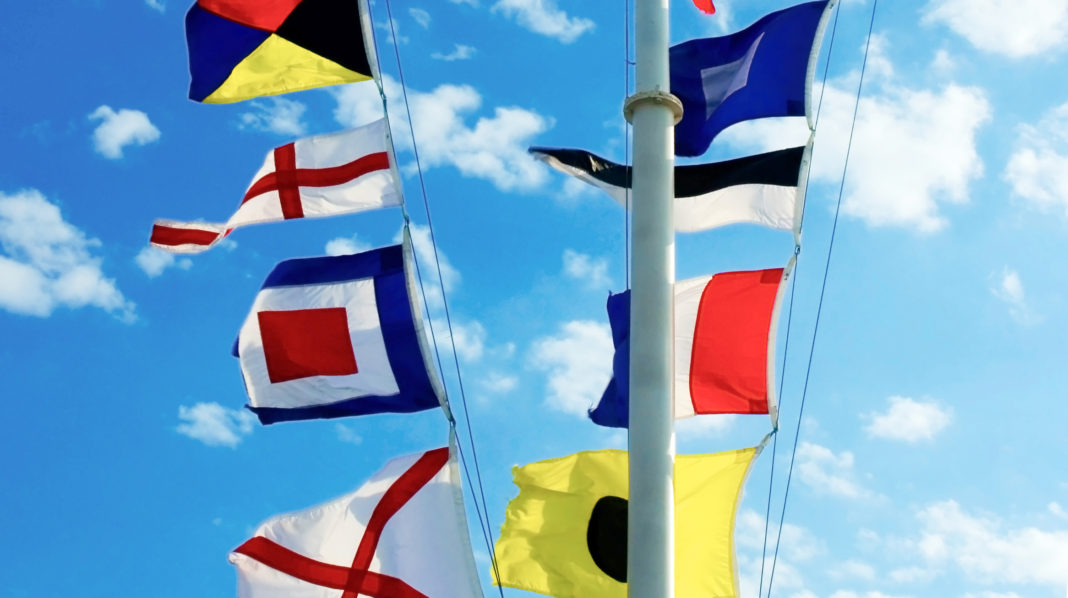
A Guide to Nautical Flags & Code Signals
Ahoy there! Have you ever wondered about those colorful flags you see fluttering on docks and seaside buildings? They’re called nautical flags, or burgees, and they have an interesting history. In the past, they were essential for communication between ships at sea, before radios and sonar came along. But nautical flags are more than just pretty decorations – they serve a practical purpose for boaters too.
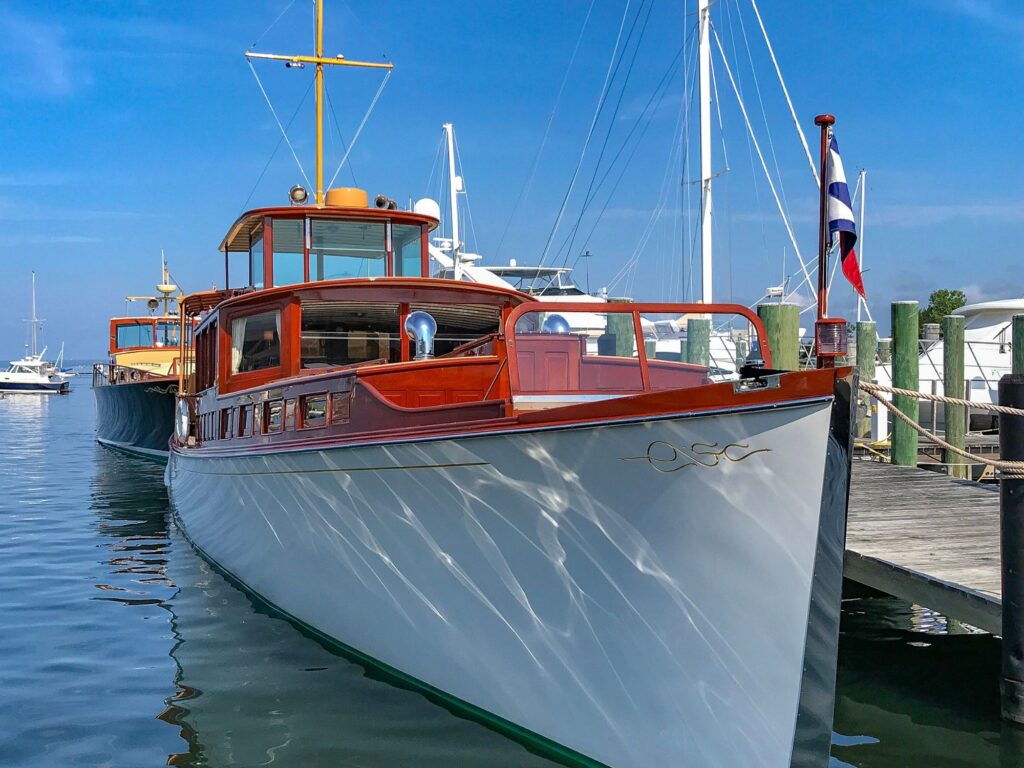
Nautical flags are part of an international code signaling system. These flags represent letters of the alphabet, numbers, and other signals, and they come in vibrant colors like red, blue, yellow, black, and white for maximum visibility. The combinations of these colors were carefully chosen to be easily distinguishable from afar. So, if you see flags that are red and white, yellow and blue, blue and white, or black and white, now you know why!
But nautical flags aren’t just for communication at sea. They also play a role in recreational boating. For example, there are flags that indicate the nationality of a vessel, the yacht club it belongs to, or even the personal interests of the boat owner. It’s like wearing a badge of honor on the water!
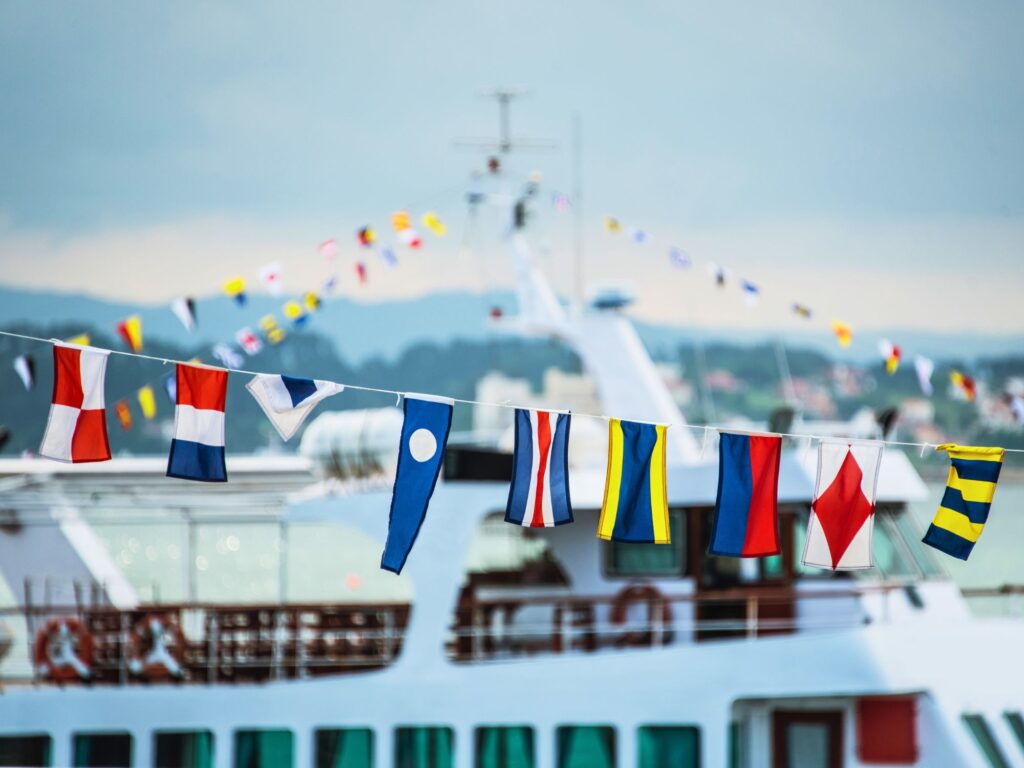
Speaking of flags, there are also important warning flags that boaters should be aware of. These flags, like the Hurricane Warning Flag and the Skin Diver Down Flag, send important messages to other vessels. They let everyone know about potentially dangerous weather conditions or the presence of divers in the area.
While technology has made nautical flags less necessary for everyday communication, it’s still a good idea for boaters to understand the basics. Who knows, maybe you can even use your newfound code skills to spruce up your beach house with some flag decorations! So, next time you spot those colorful fluttering flags, remember the fascinating history and practicality behind them. Happy boating!
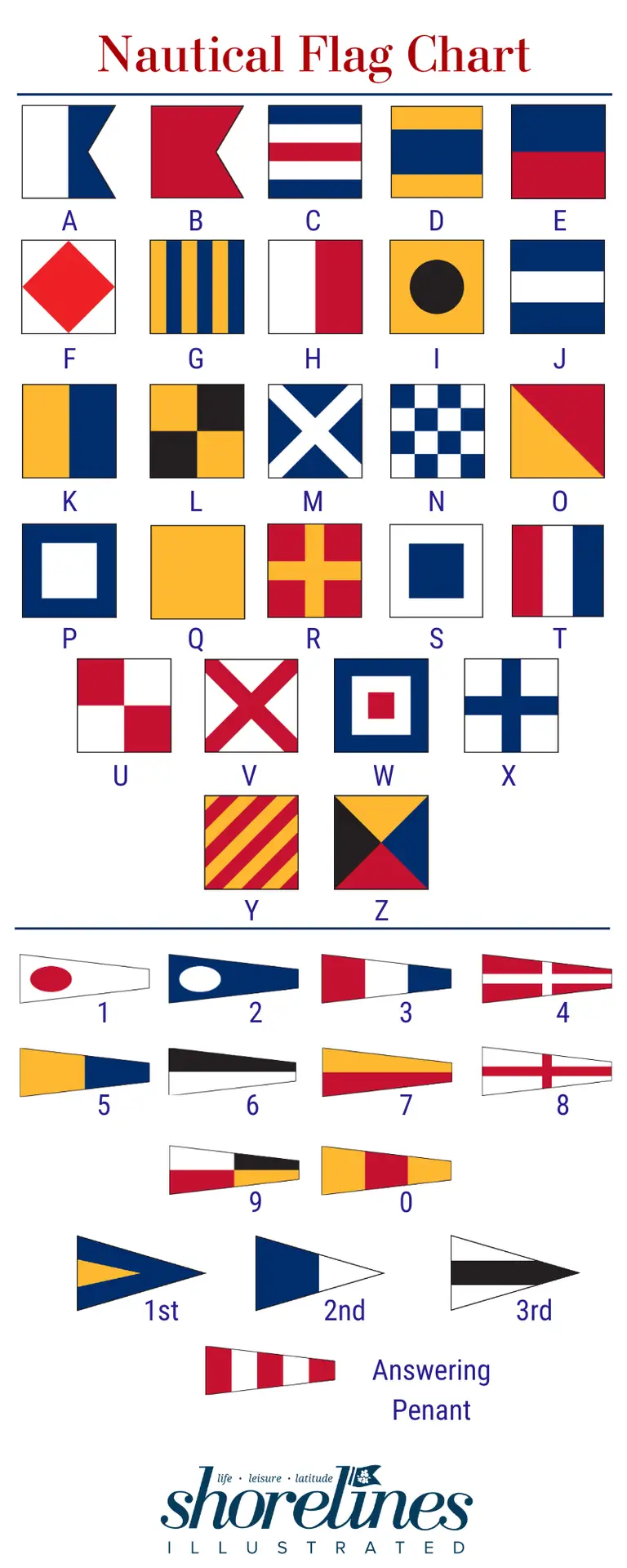
RELATED ARTICLES MORE FROM AUTHOR
Follow us on instagram @shorelinesillustrated.
Pixel-perfect images at any size
- are vector images that can be shown at any size without becoming blurry
- are generated by software, not drawn in a graphics package, resulting in tiny file sizes and consistent, pixel-perfect alignment
- have realistic colours that don’t hurt your eyes (or your printer)
- include all flags and pennants from the International Code of Signals (ICS) and the Racing Rules of Sailing (RRS) and more
- are published in the Public Domain so are free to use for any purpose anywhere without restriction.
Use signal flags
In a document.
Download our latest image bundle for use in most software including Microsoft Word (2016 on), Office 365 and LibreOffice/OpenOffice
On a website
If you use editing software you can just insert our image files, but if you use a lot of flag images on a page there are better ways to do it.
In an application
The software that generates our images is available under an open source license.

Set Sail to Victory: Mastering Sailboat Racing Flags and Signals
Sailboat racing is a thrilling and challenging sport that requires skill, strategy, and knowledge of sailing rules and regulations. One of the essential components of sailboat racing is the use of flags and signals to communicate important information to the sailors.
Sailboat racing flags and signals are a standardized system used to convey messages about the course, starting times, penalties, and other critical information. In this article, we will explore the various sailboat racing flags and signals and their importance in the sport.
The Importance of Sailboat Racing Flags and Signals
Sailboat racing flags and signals are a set of visual cues used to communicate important information to sailors during a race. These signals can indicate the start and end of a race, changes in wind direction, or other important information that can affect a sailor’s strategy.
Understanding these signals is critical for any sailor who wants to compete in a sailboat race. Some common sailboat racing flags and signals include the “preparatory” flag, which indicates the start of the race is imminent, and the “postponement” flag, which indicates a delay in the start of the race.
Sailboat racing flags and signals are essential to the smooth and safe conduct of sailboat races. Without these flags and signals, sailors would be unable to navigate the race course safely or understand the starting times, course changes, or penalties.
Flags and signals provide a standardized system of communication that ensures that all sailors have the same information at the same time. This, in turn, promotes fair competition and ensures that all sailors have an equal opportunity to win.
The Basic Sailboat Racing Flags and Signals
The World Sailing ( WS ) is the world governing body for the sport of sailing (until 14 November 2015 named as International Sailing Federation or ISAF) has established a standardized system of sailboat racing flags and signals that are used worldwide. These flags and signals communicate essential information about the race, such as the starting times , course changes , penalties , and finish line . Below are the most common sailboat racing flags and signals:
The Preparatory Signal
The preparatory signal is the first signal made before the start of a sailboat race. This signal indicates that the race is about to start and that the boats should be prepared to start racing. The preparatory signal is usually made 5 to 10 minutes before the start of the race, depending on the size and type of race.
During the preparatory signal, the race committee displays the preparatory flag, which is a solid white flag with a blue horizontal stripe. The preparatory flag is displayed until the starting signal is made. Boats that cross the starting line before the starting signal is made are considered to have started early and may be penalized.
The Starting Signal
The starting signal is the second signal made in a sailboat race. This signal indicates that the race has officially started, and the boats can begin racing. The starting signal is usually made immediately after the preparatory signal, although there may be a delay if conditions are not suitable for racing.
The starting signal is made using the starting gun or horn. Boats must cross the starting line after the starting signal is made, or they will be considered to have started late and may lose valuable time.
The General Recall Signal
The general recall signal is made when the race committee determines that the starting sequence has not been fair or equal for all boats. This signal indicates that the race will be restarted.
During the general recall signal, the race committee displays the first substitute flag, which is a blue and white flag with a blue square in the center. Boats must return to the starting line and prepare to start again.
The Individual Recall Signal
The individual recall signal is made when a specific boat is identified as starting early. This signal indicates that the identified boat must return to the starting line and start again.
During the individual recall signal, the race committee displays the X flag, which is a black flag with a white square in the center. The identified boat must return to the starting line and start again after all other boats have started.
The Postponement Signal
The postponement signal is made when conditions are not suitable for racing. This signal indicates that the start of the race will be delayed until conditions improve.
During the postponement signal, the race committee displays the AP flag, which is a solid blue flag. Boats must return to the starting area and wait for further instructions.
The Abandonment Signal
The abandonment signal is made when conditions become too dangerous for racing. This signal indicates that the race will be abandoned, and all boats must return to shore.
During the abandonment signal, the race committee displays the N flag, which is a solid black flag. Boats must stop racing and return to shore immediately.
The Shortened Course Signal
The shortened course signal is made when conditions are not suitable for completing the full race course. This signal indicates that the race course will be shortened to ensure the safety of the boats and sailors.
During the shortened course signal, the race committee displays the S flag, which is a solid white flag with a blue square in the center. Boats must complete the shortened course and cross the finish line.
The Finish Signal
The finish signal is the final signal made in a sailboat race. This signal indicates that the race is over, and the boats have completed the race course. The finish signal is usually made when the boats cross the finish line.
During the finish signal, the race committee displays the finishing flag, which is a solid white flag with a blue vertical stripe. Boats must cross the finish line and complete the race. The boats are then ranked based on the order in
Additional Sailboat Racing Flags and Signals
In addition to the basic sailboat racing flags and signals, there are other flags and signals used in sailboat racing. These flags and signals communicate additional information about the race, such as penalties and rule enforcement. Below are some additional sailboat racing flags and signals:
The Penalty System
In sailboat racing, the penalty system is an important mechanism to ensure fair play and discourage cheating. The penalty system involves the use of penalty turns, which is a requirement for a boat to make a 360-degree turn as a result of committing a rule violation. The penalty turns must be completed as soon as possible, and failure to do so will result in further penalties.
The penalty system is signaled by the display of the “yellow flag” by the race committee boat. This flag is accompanied by a horn blast, which signifies that a penalty has been given to a boat. If a boat receives a penalty, it must complete the penalty turns as soon as possible.
The Black Flag Rule
The black flag rule is a sailing rule that is used to discourage boats from starting too early. Under this rule, if a boat is over the starting line when the starting signal is given, it is disqualified from the race.
The black flag is signaled by displaying a black flag with a white square in the middle. This flag is displayed with the one-minute signal before the start of the race. If a boat is over the starting line when the race starts, and the black flag is displayed, the boat is disqualified.
The Blue Flag Rule
The blue flag rule is used to indicate that a boat is in danger and requires assistance. The blue flag is displayed by a boat that requires assistance, and this signal must be acknowledged by other boats in the race.
The blue flag is displayed by a boat in distress or requiring assistance, and other boats must immediately make way for the distressed boat. If a boat fails to acknowledge the blue flag signal, it may be subject to penalties.
The Red Flag Rule
The red flag rule is used to s ignal that a race has been stopped due to an emergency situation . The red flag is displayed by the race committee boat, and all boats must immediately stop racing.
If the red flag is displayed, all boats must immediately stop racing and proceed to the designated area. The race will be restarted once the emergency situation has been resolved.
Sailboat racing flags and signals are a crucial part of the sport of sailboat racing. They provide a standardized system of communication that ensures fair competition and safe racing. Understanding these flags and signals is essential for all sailors who want to compete in sailboat racing.

What happens if a boat does not follow the sailboat racing flags and signals?
If a boat does not follow the sailboat racing flags and signals, it may be penalized or disqualified from the race.
Are sailboat racing flags and signals the same worldwide?
Yes, sailboat racing flags and signals are standardized worldwide by the International Sailing Federation (ISAF).
What is the penalty for starting early in sailboat racing?
The penalty for starting early in sailboat racing is usually a 360-degree turn penalty.
How are safety rules enforced in sailboat racing?
Safety rules are enforced in sailboat racing using the red flag rule. If a boat is identified as posing a safety risk, it will be disqualified from the race.
Can sailboat racing flags and signals change during a race?
Yes, sailboat racing flags and signals can change during a race due to weather conditions or other safety concerns.
- Recent Posts
- Responsibilities of a Fourth Engineer on Cargo Ships – September 10, 2024
- The Role of Cargo Ships in Global Trade – August 22, 2024
- Report: Yang Ming’s YM Mobility Explosion at Ningbo-Zhoushan Port – August 9, 2024
About the author
I worked as an officer in the deck department on various types of vessels, including oil and chemical tankers, LPG carriers, and even reefer and TSHD in the early years. Currently employed as Marine Surveyor carrying cargo, draft, bunker, and warranty survey.
Latest posts

Is Maritime Security Necessary on Modern Ships?
It’s vital for ships to stay vigilant. Isolation from land means having no backup or protection for miles, making them vulnerable to attacks and other threats. Equip modern ships using modern maritime security methods.

Responsibilities of a Fourth Engineer on Cargo Ships
A Fourth Engineer on cargo ships oversees engine room operations, machinery maintenance, and ensures compliance with regulations like MARPOL.

The Quality Control Process in Marine Manufacturing
Companies in the marine manufacturing space must have tight and effective quality control processes. What steps should an effective quality control process include?
- Gift Certificate
- --> Login or Sign Up

Shop by Category
- Air Quality
- All Accessories
- License Plates and Frames
- Decals and Pins
- All Advertising
- Automotive/Dealership
- Message Flags
- Solid and Checkered
- All Auto/Bike/Boat
- Bike/Motorcycle Flags
- Car/ Motorcycle Racing
- Dealership Car Flags
- Classroom/ School
- All Commercial
- Advertising & Message
- Rope & Snaphooks
- External Halyard Parts
- Internal Halyard Parts
- All Feather Flags and Hardware
- Delivery / Take Out
- Auto Services
- Cigar Cigarettes
- Electronics
- Farmers Market
- Garden Center
- Hardware Store
- Marijuana Stores
- Miscellaneous
- Real Estate
- Semi Custom Flags
- Tax Services
- Wine, Beer and Liquor
- All Flagpoles/Parts/Rope
- Residential Poles, Parts & Rope
- Repair and Service
- All Government Depts
- Central Intelligence Agency
- Defense Commissary Agency
- Defense Logistics Agency
- Federal Deposit Insurance Corporation (FDIC)
- Missile Defense Agency
- National Credit Union Administration
- Office of the President
- U.S. Agency for International Development
- United States Securities and Exchange Commission
- Peace Corps
- Federal Trade Commission
- Small Business Administration (SBA)
- National Transportation Safety Board (NTSB)
- United States Supreme Court
- Dept of Agriculture
- Dept of Commerce
- Dept of Defense
- Dept of Education
- Dept of Energy
- Dept of Health & Human Services
- Dept of Homeland Security
- Dept of Housing & Urban Development
- Dept of Justice
- Dept of Labor
- Dept of State
- Dept of Transportation
- Dept of the Treasury
- Dept of the Interior
- Dept of Veterans Affairs
- Dir of National Intelligence
- Environmental Protection
- Federal Bureau of Investigation
- Federal Reserve System
- General Services Administration
- Government Accountability Office
- Office of Personnel Management
- Social Security Administration
- The Smithsonian Institution
- U.S. Civil Service
- U.S. Defense Heath Agency
- U.S. Defense Threat Reduction Agency
- U.S. Congress
- U.S. Postal Service
- U.S. Strategic Command
- All Grave Markers
- Grave Markers - 3 Inch Medallions
- Grave Markers - 6 Inch w/rod and no rod
- All Indoor/Parade/Lobby
- Indoor Flag Sets
- Ceremonial Poles
- Floor Bases
- Ornaments and Finials
- Parade/Banner Poles
- Cord & Tassels
- Flag Covers
- All International Flags
- International
- International Stick Flags
- All Military
- Military Indoor Lobby Sets
- U.S. Air Force - Air National Guard
- U.S. Army National Guard
- U.S. Air Force
- U.S. Marine Corps
- U.S. Coast Guard
- U.S. Space Force
- U.S. Merchant Marine
- U.S. POW / MIA
- Blue Star Service Banners
- Gold Star Service Banners
- U.S. Military Service & Support
- U.S. Military Accessories
- All Nautical
- Code of Signals
- Beach Warnings
- Coast Guard
- Foreign 12x18 Inch
- Power Boat Racing Flags
- Semaphore Signal Flags
- Skin Diving
- State 12x18 Inches
- Shark Warnings
- Yacht Ensign
- All String Pennants
- Regular Solids
- Icicle Solids
- Fluorescent Regular & Icicle
- Pride / Rainbow
- All Police/Fire/EMS
- All Religious
- Denominational
- Denominational Lobby Sets
- All Residential
- Residential House Poles
- Seasonal and Theme
- Brackets & Holders
- Parts & Accessories
- Solar Lights
- In-Ground Flagpoles
- Memphis Grizzlies
- Univ Alabama
- Univ Arkansas
- Univ Mississippi
- Mississippi State University
- Univ Memphis
- Univ Tennessee
- Solid Colors and Checkered
- All Specialty Flags
- Memphis in May
- Mississippi
- Confederate
- All States/Cities
- All Stick Flags and Sets
- Stick Flag Base
- State Stick Flags
- Military Stick Flags
- Specialty & Novelty Stick Flags
- Miscellaneous Flag Sets
- All US Flags/Patriotic
- US Flags by Size
- US Polyester Flags
- US Nylon Flags
- US Cotton Flags
- US Indoor and Lobby Flags
- US G'Spec Flags
- Fire Truck Flags
- US Suspension Flags
- US Hanger & Warehouse Flags
- US Auto, Bike and Boat Flags
- US Pins, Decals and Accessories
- US Stick Flags
- Patriotic Decorations
- All U.S. Stick Flags
Shop by Brand
- Global Advertising
- Annin Flagmakers
- National Banner
- Eagle Emblems
- Magnolia Garden
- Valley Forge
- View all Brands
- CenTec Cast Metal Products
- BSI Products
- Temple Aluminum Foundry
- Sewing Concepts
- Spartacraft
- Two Group Flag
- Atlas Flags
- Flag Source
- In The Breeze
- U.S. Flag Maker
- American Plaque

Racing Flag Signals
Sail races are governed with flags and sound signals to indicate flag changes. The flags used are taken from the International maritime signal flag set. During a race and for any signal concerning the race, these flags are defined in the ISAF Racing Rules of Sailing but the signal can be modified by the Sailing Instructions.
The raising (hoisting) or removing of a visual signal is accompanied by the emission of a sound signal to draw attention to the new signal. The type of the sound signal (one short sound, two short sounds, one long sound, etc.) is described by the rule according to the type of signal.
Click here for a link to "Racing Rules Of Sailing" and usual meanings of racing flags.

Race Committee Flag - 20x30 Inches

Race Committee Flag - 24x36 Inches
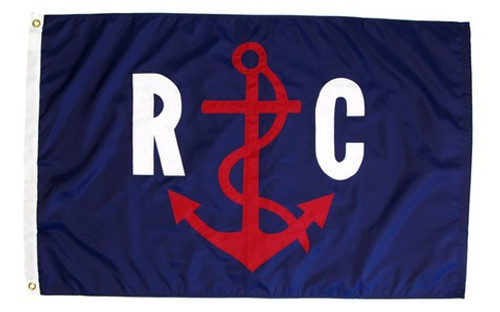
Race Committee Flag - 12x18 Inches
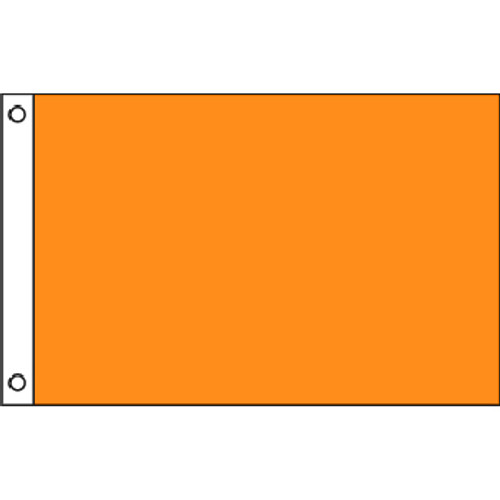
On Station Flag
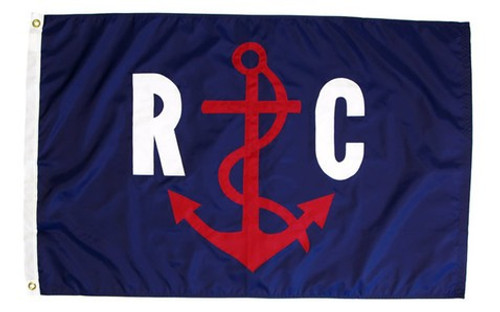
Race Committee Flag

Black & White 2x3 Foot Checkered Flag
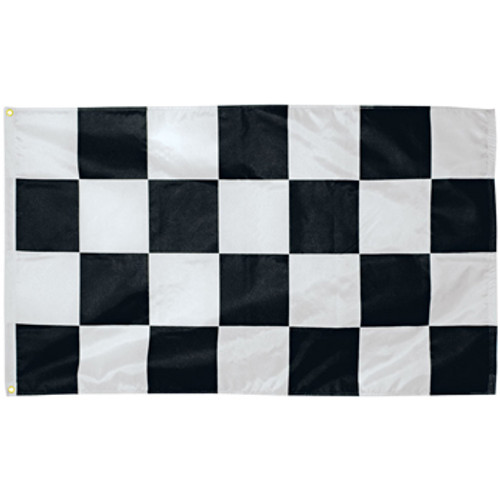
Black & White Lighweight Checkered Flag

Yacht Boat Racing Flag - Blue

Yacht Boat Racing Flag - Black
This is a commercial grade nautical product designed for outdoor use. It is made using our 200 Denier Outdoor Nylon fabric and includes sewn letters and anchor logo. Your flag is finished with a heavy white canvas heading and strong brass grommets.
(Optional - Depends on starting method) - Denotes that orange smoke has been lit and there are 3 minutes or less until the start of the race.
This is a commercial grade nautical product designed for outdoor use. It is made using our 200 Denier Outdoor Nylon fabric and includes sewn letters and anchor logo. Your flag is finished with a heavy white canvas heading and strong brass grommets. ...
Our Checkered, Black & Whit enylon flag. Perfect for racing events, auto shows, estate sales and auctions. Printed on Commercial Grade Nylon material, is strong and sturdy, with a high-gloss look. Includes canvas heading and grommets.
Our Checkered, Black & White poly/cotton flag. Perfect for racing events, auto shows, estate sales and auctions. Printed on poly/cotton material, is strong and sturdy, with a high-gloss look. Includes canvas heading and grommets. In Power Boat...
When displayed the race committee boat is in position at the finishing line.
The Black Flag Rule 30.3 will be in effect. A boat within the triangle formed by the ends of the line and the first mark during the minute before the start will be disqualified without a hearing.
St. Petersburg Sailing Association

Welcome to SPSA!
The St. Petersburg Sailing Association is a dedicated group of sailors who race and cruise throughout the year on Tampa Bay. We are a relaxed, sailing-focused, volunteer-run club with one core mission: to encourage participation in the noble art of sailing . Let’s go sailing!
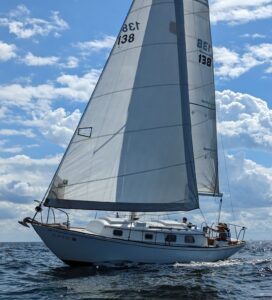
We always love to welcome new members. Whether or not you own a sailboat, joining SPSA is a fun, easy way to get involved in the sailing community and get on the water.
New to racing? No problem! Not only do we host cruising events and casual sailing opportunities, we also host regular racing seminars and would love to show you the ropes.
All of our 36 scheduled regattas, cruises, and educational seminars are included in the annual membership fee of just $55. That’s only $1.50 per event!
Still have questions? Send us an email to learn more: [email protected]
For FLAGS, BANNERS, BURGEES....LEAVE it to BEAVER FLAGS!

- my account Sign in Register Gift Certificates
FREE SHIPPING TODAY on $99+ Orders! All of our flags are MADE IN THE USA !
You may call us at 727.329.8364.
You may email us at [email protected].
You may snail mail us at:
Beaver Flags
6733 1st Avenue S
St. Petersburg, FL 33707
You may complete the form below and click send to contact us.
© 2024 Beaver Flags All rights reserved. | Sitemap
Please verify you are a human
Click "I am not a robot" to continue
Reference ID:

IMAGES
VIDEO
COMMENTS
Two sailing ships dressed overall with their signal flags. International maritime signal flags are various flags used to communicate with ships. The principal system of flags and associated codes is the International Code of Signals. [1] Various navies have flag systems with additional flags and codes, and other flags are used in special uses, or have historical significance.
Calling the O Flag the cheating flag is certainly a bit of a misnomer. The O Flag does, however, suspend Rule 42 of the Racing Rules of Sailing. Rule 42 is particularly notorious, as it bans pumping, rocking, ooching, sculling, and excessive maneuvering, all of which are methods to make your boat go substantially faster.
Signal Flags And Their Meanings. Signal flags harken back to a bygone era before VHF and cell phones. At one time, flags were the cornerstone of every well operated ship or military unit's communication system, signaling maneuvers, emergencies and other general information for crew and comrades to receive with fear and trepidation.
Signal flags are typically raised or flown at different points of the vessel to convey specific messages, such as the masthead, yardarm, or a designated signal halyard. The use of nautical flag signaling codes, such as Elford's universal signals, can improve the efficiency and effectiveness of maneuvering signals, facilitating clear ...
The nautical flag alphabet, also known as international maritime signal flags, is a system of 26 flags. In addition there are: 10 numeral pennants 3 substitute pennants 1 answering pennant These are used as communications tools on boats and they date back a considerable length of time. The nautical alphabet…
When a visual signal is displayed over a class flag, fleet flat, event flat or race area flag, the signal applies only to that class, fleet or race area. ... Racing Rules of Sailing for 2013-2016; Version 6: December 2015: Racing Rules of Sailing for 2017-2020: August 2017: Racing Rules of Sailing for 2021-2024: December 2020:
W - Whiskey - I require medical assistance. X - X-ray - stop your intention. Y - Yankee - I am dragging anchor. Z - Zulu - I require a tug. 3. Remember that the numbers on nautical flags have meanings, too. When it comes to numbers, boaters use pendants. Ten different pendants represent the numbers zero through nine.
Protest Flags and Signals. When you see a protest flag in sailboat racing, it's important to understand its meaning. The most common protest flag is a red flag with a white cross, indicating that a boat is protesting another boat for a rule violation. If you find yourself in a protest situation, it's cru ...
Today's official name for boat flags is international maritime signal flags. There are 26 international maritime signal flags, each representing a different letter of the alphabet, and each having a second meaning that's a message to other boaters. Nautical flags can have many meanings: Complex messages;
Theory. Flags to represent individual letters of the alphabet to aid in signalling to or from sailing vessels. International maritime signal flags is an Internation Code of Signals (ICS) system that uses flags to represent individual letters of the alphabet to aid in signalling to or from sailing vessels. Below is a list of letters and their ...
Nautical flags, also known as maritime signal flags, are a set of flags and pennants used to communicate messages between ships and boats. Each flag represents a specific letter, number, or message, allowing vessels to convey information even when verbal communication is not possible. The use of nautical flags dates back centuries and continues ...
In fact, signals with two nautical flags typically mean some type of distress or maneuvering issue. Three or more flags can include pendants and denote things like points of the compass, geographical signals, names of ships, time and position, as well as latitude and longitude. 5. Flags are sometimes exclusive or secret language.
Nautical Flags and Their Meanings. The purpose of the International Code of Signals is to provide ways and means of communication in situations related essentially to safety of navigation and persons, especially when language difficulties arise, or because radio silence is required. Here are their names and meanings, both International and/or ...
Nautical flags are part of an international code signaling system. These flags represent letters of the alphabet, numbers, and other signals, and they come in vibrant colors like red, blue, yellow, black, and white for maximum visibility. The combinations of these colors were carefully chosen to be easily distinguishable from afar.
include all flags and pennants from the International Code of Signals (ICS) and the Racing Rules of Sailing (RRS) and more; are published in the Public Domain so are free to use for any purpose anywhere without restriction. Use signal flags In a document. ... Use signal flags In a document.
Marine Electronics. Dive into the sea of maritime communication with our Ultimate Guide to Nautical Flags. Decode meanings, understand signals and navigate the waves confidently.
Sailboat racing is a thrilling and challenging sport that requires skill, strategy, and knowledge of sailing rules and regulations. One of the essential components of sailboat racing is the use of flags and signals to communicate important information to the sailors. Sailboat racing flags and signals are a standardized system used to convey ...
Nautical flag etiquette is an essential part of sailing. The seven most common types of boat flags are Skin Diver flags, Storm Warning flags, Coast Guard boat flags, US Jack flags, Maritime flags and Pennants, Yacht Ensign & Officer flags, and most importantly the International Code Signal flags. Code signal flags and are frequently used by ...
Racing Flag Signals. Sail races are governed with flags and sound signals to indicate flag changes. The flags used are taken from the International maritime signal flag set. During a race and for any signal concerning the race, these flags are defined in the ISAF Racing Rules of Sailing but the signal can be modified by the Sailing Instructions.
Made In America since 1950. US Coast Guard retiree, Gordon Eager, the first "eager beaver", founded Beaver Flags in 1950 in St. Petersburg, FL. His initial focus was to provide sailors in St. Petersburg with custom, high quality, Made in the USA yacht flags. The St. Pete Yacht Club burgee, pictured left, was one of the first hand sewn applique ...
Welcome to SPSA! The St. Petersburg Sailing Association is a dedicated group of sailors who race and cruise throughout the year on Tampa Bay. We are a relaxed, sailing-focused, volunteer-run club with one core mission: to encourage participation in the noble art of sailing. Let's go sailing!
Custom Sewn and Embroidered 4" x 6" Stick Table Flag. $19.95. THIS is WHY you should take advantage of our 70+ year history of designing, creating and sewing personalized flags, company pennants and boat burgees: 100% MADE IN THE USA by our experienced seamstresses Top quality UV resistant 200 and 400...
You may call us at 727.329.8364. You may email us at [email protected]. You may snail mail us at: Beaver Flags. 6733 1st Avenue S. St. Petersburg, FL 33707. OR. You may complete the form below and click send to contact us. Full Name.
5050 74th St N #1, Saint Petersburg, FL 33709 is a 3,409 sqft, 9 bed, 6 bath Multi-Family Home listed for $975,000. PHENOMENAL MULTI UNIT INVESTMENT OPPORTUNITY WITH 6 UNITS PRICED FOR AN IMMEDIATE SALE IN A GREAT ST. PETE...